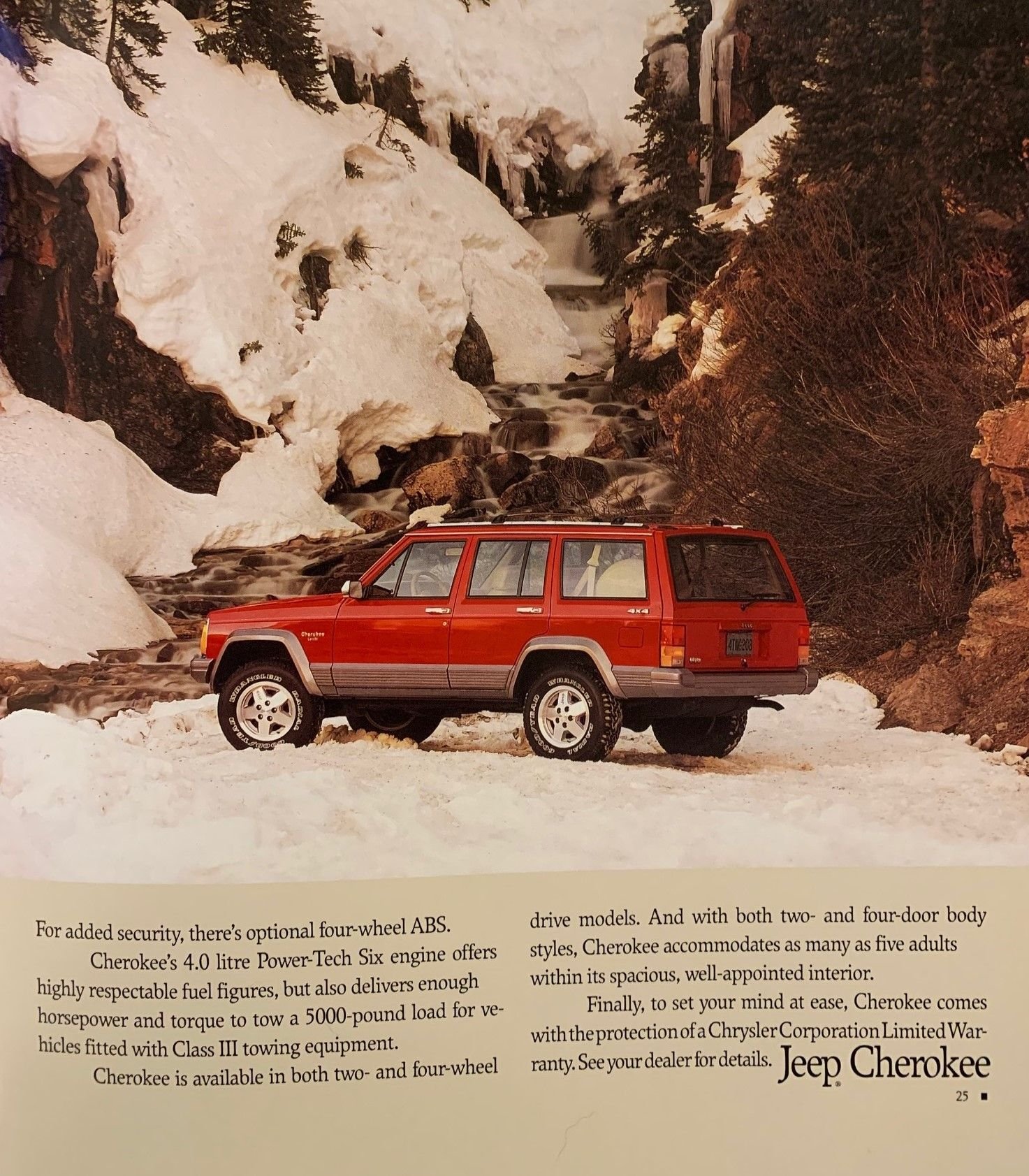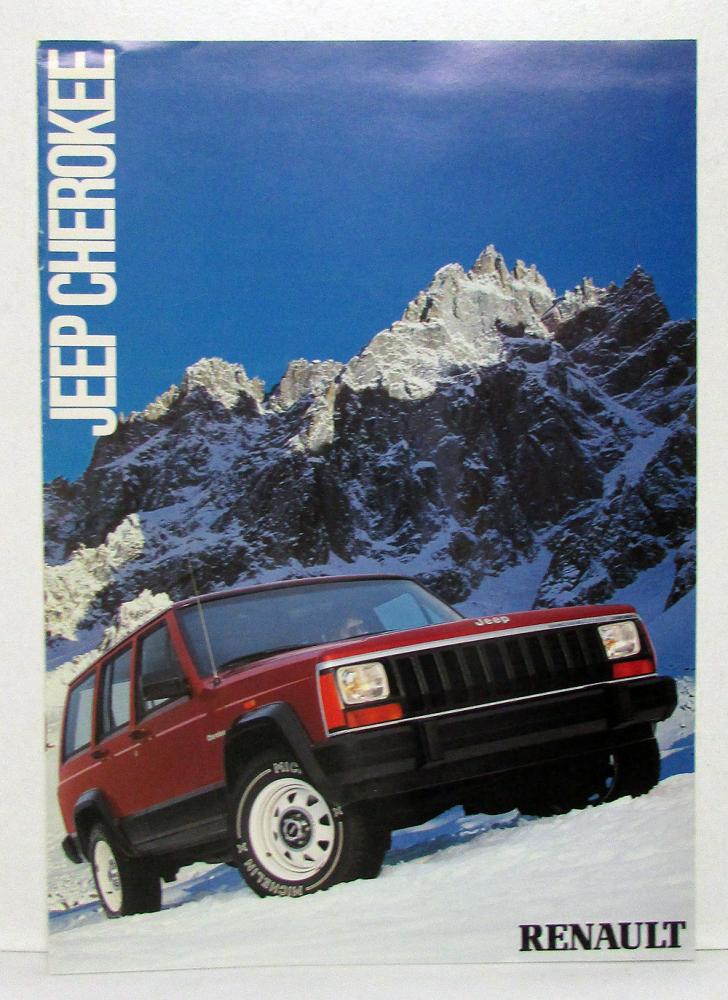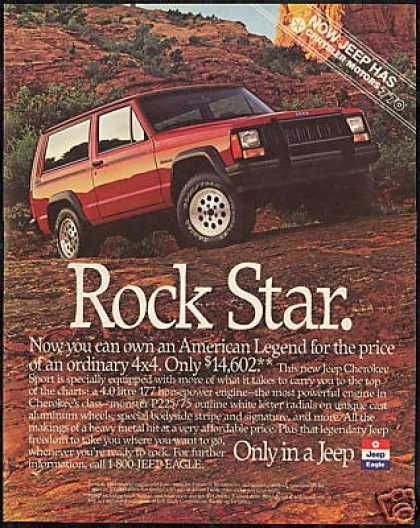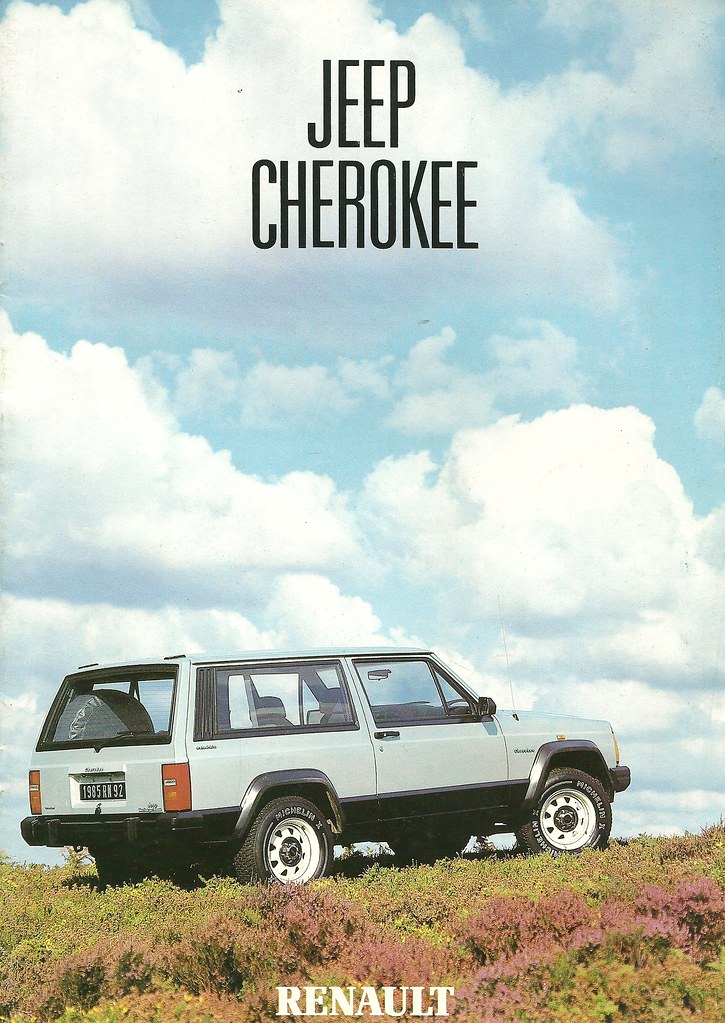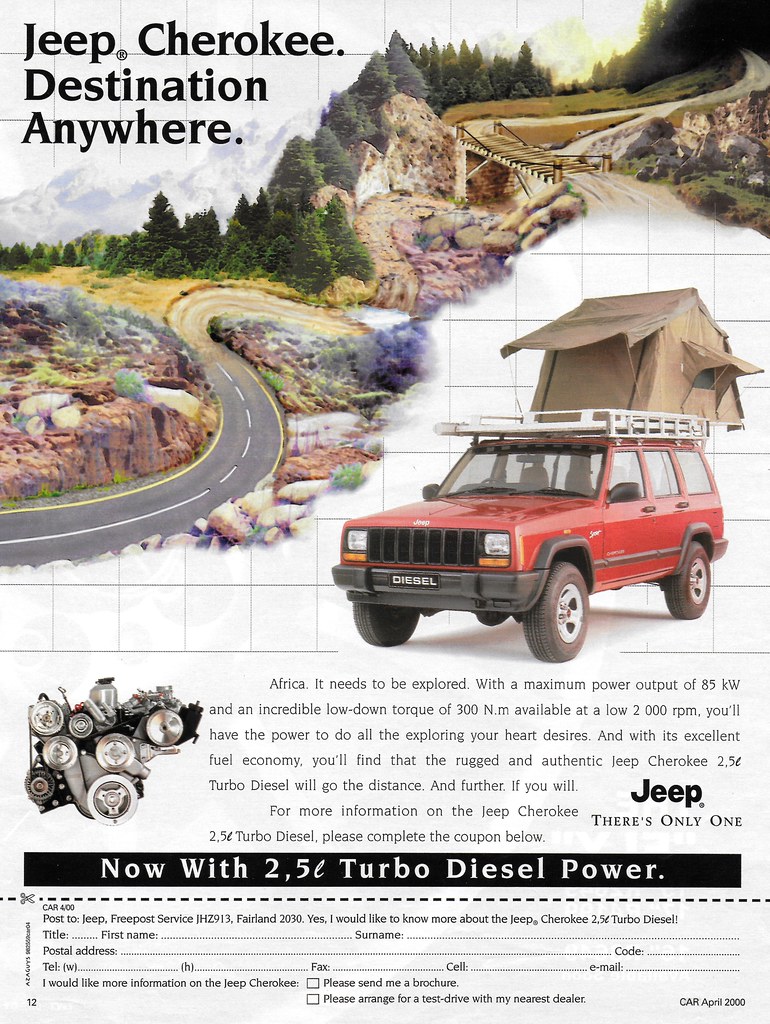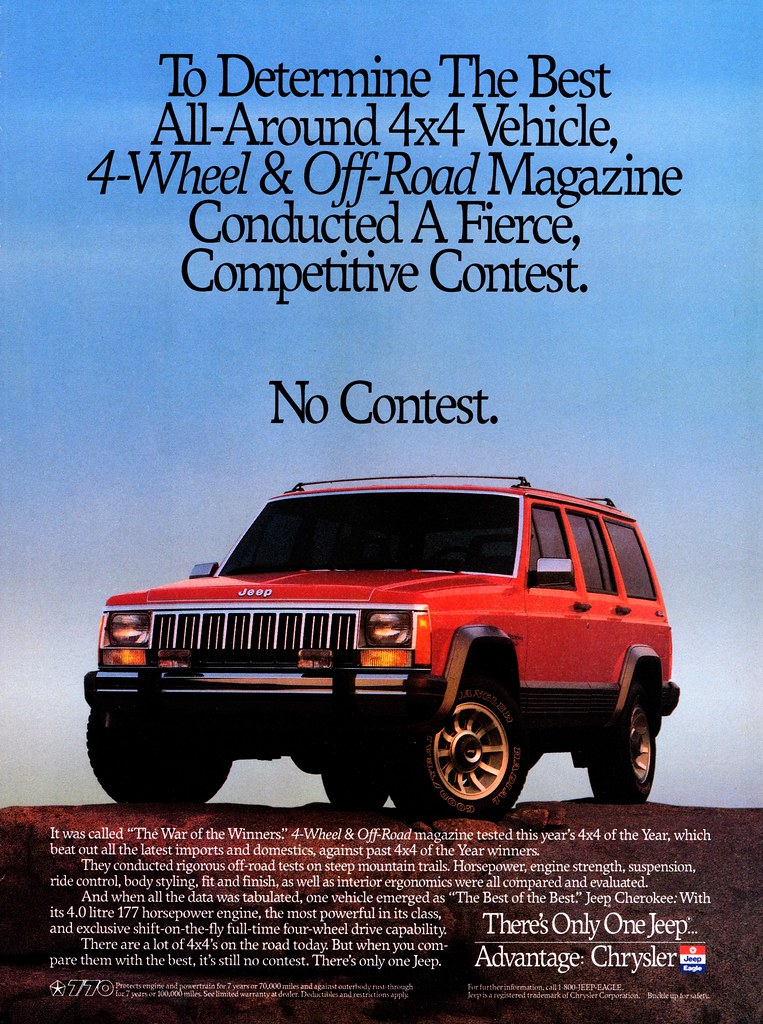The Jeep Cherokee XJ revolution
The Jeep Cherokee XJ is a cornerstone of off-road and SUV culture, earning its place in automotive history through innovation, durability, and unparalleled versatility. Manufactured from 1984 to 2001, the Jeep XJ not only defined the compact SUV segment but also became a global icon, beloved by enthusiasts and casual drivers alike. This article dives deep into the XJ’s history, exploring its unique design, technical characteristics, and the reasons it remains a classic.
Jeep Cherokee XJ: General History
Introduced in 1984 by Jeep (then a part of American Motors Corporation), the Jeep XJ broke new ground. It was among the first unibody SUVs, offering a lightweight yet sturdy structure that combined the off-road capability Jeep was known for with car-like comfort and handling.
The design and launch of the Jeep XJ are pivotal moments in automotive history, and we can celebrate its 40th anniversary by delving into its fascinating origins.
Design and Development Highlights
- Early Designs (1978): The compact Jeep XJ Cherokee’s journey began in 1978 with collaborative efforts from American Motors (AMC) and Renault engineers. Initial sketches were heavily inspired by the full-size SJ Cherokee, blending American ruggedness with European finesse.
- Innovative Suspension: AMC’s Vice President of Engineering, Roy Lunn, introduced the groundbreaking “Quadra-Link” suspension system. This innovation significantly reduced the risk of rollovers, enhancing the vehicle’s safety and off-road prowess.
- Renault’s Influence: François Castaing of Renault contributed to the drivetrain, emphasizing efficiency with a smaller engine—a revolutionary move for 4WD vehicles at the time.
- Unibody Construction: The XJ pioneered unibody construction in non-military 4x4s, blending durability with lighter weight for superior performance and efficiency. This structural design remains a cornerstone in SUV manufacturing.
- eXciting Jeep: The designation ‘XJ’ is rumored to stand for “eXciting Jeep,” reflecting the brand’s vision of crafting a groundbreaking vehicle that combined rugged capability with modern versatility.
Jeep Cherokee XJ prototype
The development of the Jeep Cherokee XJ involved several prototype stages, with some images and sketches available that provide insight into its design evolution.
Transition from AMC to Chrysler
The design and engineering of the Cherokee XJ were managed by AMC (American Motors Corporation) from 1984 to 1987. In 1987, Chrysler acquired AMC and continued the Cherokee XJ’s production with minimal design changes, riding on the model’s success until the end of production in 2001.
Concept Vehicles:
In addition to the main prototype, several concept were considered even pickup truck ideas. the vehicles based on the XJ platform were developed to explore different design directions and market potentials:
- Jeep Cherokee Freedom Concept (1990): This concept combined elements of the Cherokee and Wrangler, featuring a removable hardtop and doors, aiming to blend the practicality of the Cherokee with the open-air experience of the Wrangler.
- Jeep Cherokee Casablanca Concept (1997): Aimed at showcasing a more luxurious and stylish version of the XJ, the Casablanca Concept featured unique paint schemes and interior finishes, reflecting a potential upscale direction for the Cherokee line.
Exploring More Prototypes:
For enthusiasts interested in a deeper dive into the various prototypes and concept vehicles associated with the Jeep Cherokee XJ, the following video provides an insightful overview:
Who designed the Jeep XJ?
The Jeep Cherokee XJ’s debut for the 1984 model year marked a departure from traditional SUV design, the creation of the XJ Jeep was a collaborative effort that brought together a team of talented designers and engineers, each contributing to its innovative design and engineering.
Key Contributors:
- Richard A. “Dick” Teague: As the Vice President of Design for American Motors Corporation (AMC), Teague led the design team responsible for the XJ. His vision for a compact, unibody SUV was instrumental in the XJ’s development.
- François Castaing: Joining AMC in 1979, Castaing, a former Renault engineer, played a pivotal role in the XJ’s engineering. He introduced innovative suspension systems influenced by Formula 1 racing technology, enhancing the vehicle’s performance and ride quality.
- Gerald C. Meyers: As AMC’s Chairman and CEO during the XJ’s development, Meyers supported the shift towards more compact and fuel-efficient vehicles, aligning with market demands and ener era.
- Roy Lunn: Often referred to as the “father of the Jeep Cherokee,” Lunn was AMC’s chief engineer and played a significant role in developing the unibody construction that set the XJ apart from its competitors.
Awards and Recognition
Upon its debut, the Jeep Cherokee XJ received significant acclaim within the automotive industry. In 1984, it achieved an unprecedented sweep of the “4×4 of the Year” awards from three leading off-road magazines, highlighting its superior design and performance in the 4×4 market.
The XJ’s impact extended beyond these initial accolades. Was awarded multiple times as the best SUV. Its unibody construction and compact dimensions influenced the design of future SUVs, and it remains a popular choice among off-road enthusiasts and collectors.
The Launch of a Legend: Jeep Cherokee XJ’s 1984 Debut
The Jeep Cherokee XJ was introduced to the world in 1984, marking the beginning of a new era in SUV design and performance. With a base price of $9,995—equivalent to approximately $32,604.07 in today’s money—it offered exceptional value for a vehicle that would redefine the compact SUV segment. Combining rugged off-road capability with everyday practicality, the XJ became an instant hit.
Upon its release, the XJ received widespread acclaim, earning the prestigious ‘4×4 Vehicle of the Year’ title from leading American off-road magazines. Its revolutionary unibody construction, innovative suspension design, and reliable performance were praised for setting new standards in the industry. The Cherokee XJ resonated with a broad audience, from adventurous off-road enthusiasts to urban drivers seeking a versatile, capable vehicle.
The XJ’s debut proved transformative for Jeep as a brand. Its immense popularity led to a doubling of Jeep’s sales in 1984, firmly establishing the Cherokee as a cornerstone of the Jeep lineup and a symbol of innovation in the automotive world.
Upon its debut, the XJ was marketed as a “sportswagon,” blending the practicality of a station wagon with the ruggedness of a Jeep. This concept eventually evolved into the modern SUV, with the XJ setting a benchmark that competitors scrambled to match.
Over its 18-year production span, Jeep manufactured an impressive total of 2,884,172 Cherokee XJs, making it one of the most iconic vehicles in automotive history.
The Cherokee XJ’s popularity was so immense that almost every vehicle was purchased in the same year it was produced, unlike many competitors that required extended advertising and sales periods to sell their inventory.
As we celebrate 40 years since the XJ’s launch, its legacy as a trailblazer in the SUV market endures. From its groundbreaking debut to its continued influence on modern vehicle design, the Jeep Cherokee XJ remains a beloved icon, cherished by enthusiasts and admired for its timeless appeal.
The 15 Jeep Cherokee XJ iconic models
The Jeep Cherokee XJ lineup is renowned for its versatility, offering a range of models that catered to diverse needs, from rugged off-road adventurers to luxury-seeking urban drivers. Across its production years, the XJ was equipped with a variety of engines, gearboxes, and 4×4 systems, ensuring there was a perfect configuration for every buyer.
Technical details
The Cherokee XJ was powered by an impressive array of engine options, showcasing its adaptability to different markets and uses. These included:
Petrol Engines
- AMC 150 2.5L Inline-4 (1984–1996):
- Early models featured a single-barrel carburetor, delivering 105 HP.
- Later upgraded to Renix TBI (117 HP) and Chrysler MPI (130 HP).
- Ideal for budget-conscious buyers needing efficiency and reliability.
- AMC 242 4.0L Inline-6 (1987–2001):
- Known as the “legendary 4.0L,” it offered exceptional torque and performance.
- Renix MPI (173–177 HP) in early models; Chrysler MPI HO (190–193 HP) in later versions.
- Revered for its durability and off-road capability.
- GM LR2 2.8L V6 (1984–1986):
- Provided 115 HP for early XJs before being phased out.Noted for its smooth operation but eventually replaced by the superior 4.0L Inline-6.
Diesel Engines
- 2.1L Renault Turbo Diesel: Producing 87 HP, this engine was efficient and tailored for European markets.
- 2.5L Turbo Diesel (VM Motori): Delivering 116 HP, it offered excellent torque and fuel economy for heavy-duty use.
Gearboxes and Drivetrain
The XJ featured several transmission options:
- Manual: 4-speed and 5-speed manual gearboxes, preferred by off-road enthusiasts for better control.
- Automatic: 3-speed and 4-speed automatic transmissions, catering to urban and highway drivers.
Jeep’s reputation for off-road supremacy was upheld with two 4×4 systems:
- Command-Trac: A part-time 4WD system designed for challenging terrains, providing exceptional grip in low-traction conditions.
- Selec-Trac: A full-time 4WD system offering flexibility for both on-road and off-road use.
Dimensions and Fuel Efficiency
- Dimensions:
- Length: 166.93 inches.
- Wheelbase: 101.57 inches.
- Fuel Efficiency:
- Ranging from 17 to 26 MPG depending on engine and configuration, the XJ balanced power with reasonable consumption for its class.
This robust technical foundation supported 14 distinct XJ models, each uniquely configured to serve the needs of drivers across urban, suburban, and off-road landscapes.
1. Jeep Cherokee XJ Base Model
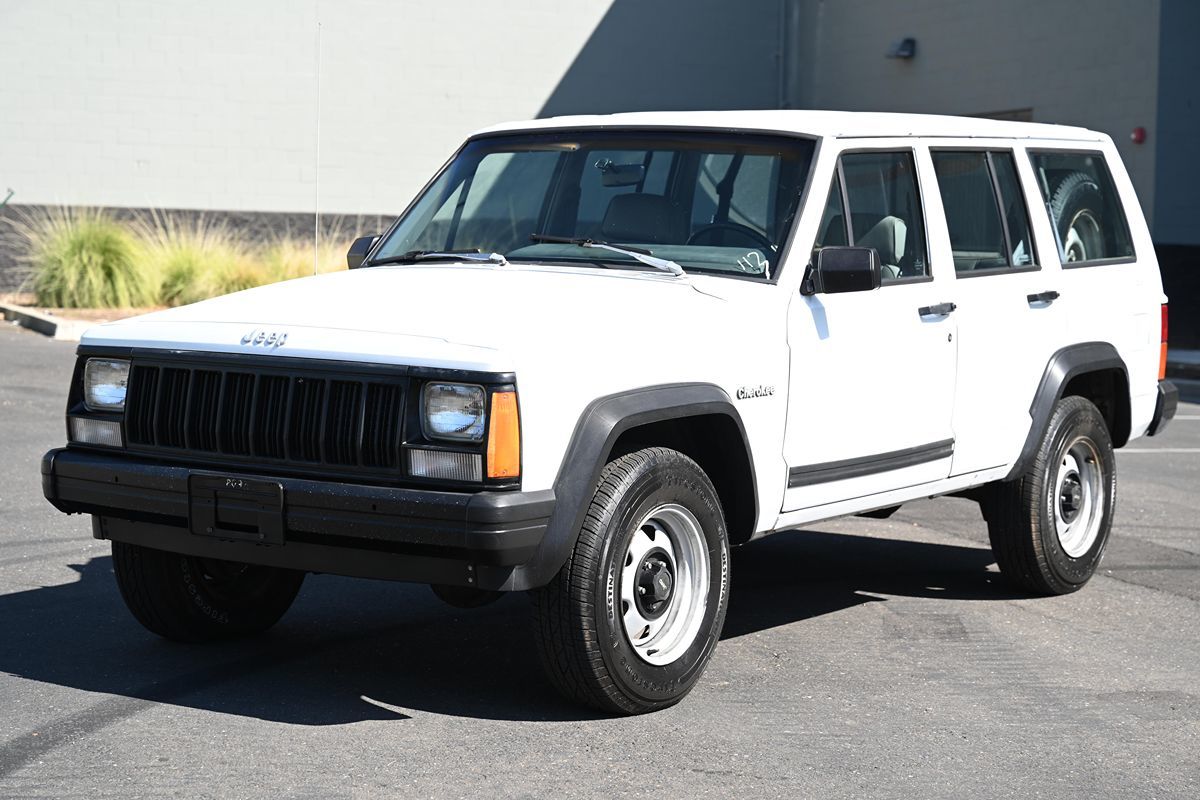
The Base model was the entry-level version of the Jeep Cherokee XJ, offering simplicity and ruggedness at an affordable price.
Production Years: 1984–2001
- Engine Options:
- 2.5L I4 producing 105 HP and 132 lb-ft of torque.
- Optional 4.0-liter inline-six generating 177 HP and 224 lb-ft of torque.
- Transmission:
- 5-speed manual or 3-speed automatic.
- 4×4 Options:
- Command-Trac part-time 4WD system.
- Interior:
- Basic cloth upholstery.
- Manual windows and locks.
- AM/FM radio with no cassette or CD options.
- Exterior:
- Plain steel wheels.
- Minimal badging, emphasizing utility over aesthetics.
- Notable Features:
- Lightweight unibody construction made it fuel-efficient and nimble.
- Target Audience:
- Designed for budget-conscious buyers who needed reliable transportation with off-road capabilities.
2. Jeep Cherokee XJ SE
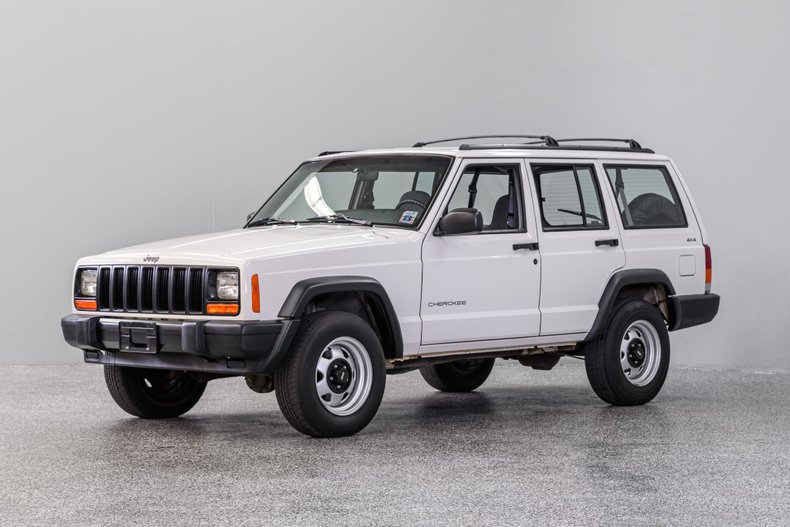
The SE trim was a step up from the Base model, adding comfort and convenience without compromising the XJ’s ruggedness.
Production Years: 1985–2000
- Engine Options:
- Standard 2.5L I4 with 122 HP and 139 lb-ft of torque.
- Optional 4.0-liter inline-six with 190 HP and 225 lb-ft of torque.
- Transmission:
- 5-speed manual or 4-speed automatic.
- 4×4 Options:
- Command-Trac or Selec-Trac 4WD systems.
- Interior:
- Improved cloth upholstery.
- Optional air conditioning.
- Upgraded audio with cassette player.
- Exterior:
- Styled steel wheels.
- Optional roof rack for added utility.
- Notable Features:
- Popular choice for buyers who wanted affordable off-road capability with some added comfort.
3. Jeep Cherokee XJ Wagoneer Limited
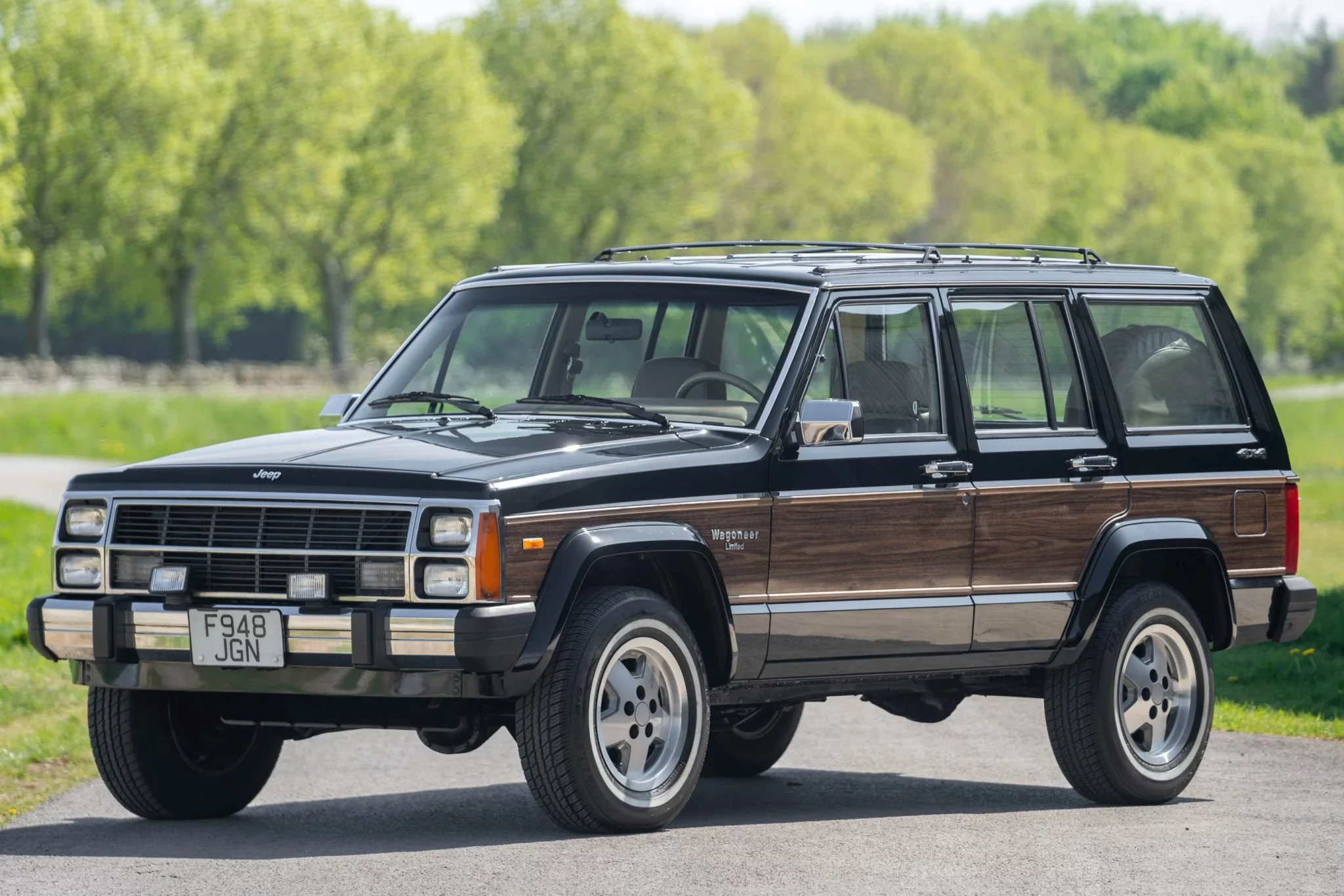
The Wagoneer Limited was a luxury-focused variant of the XJ, blending rugged capability with upscale features.
Production Years: 1984–1990
- Engine Options:
- 4.0-liter inline-six with 190 HP and 225 lb-ft of torque.
- Transmission:
- 4-speed automatic transmission.
- 4×4 Options:
- Full-time Selec-Trac 4WD.
- Interior:
- Leather upholstery with woodgrain trim.
- Power-adjustable seats.
- Premium audio system with CD player.
- Digital instrument cluster.
- Exterior:
- Signature woodgrain paneling on the body.
- Alloy wheels.
- Fog lights and chrome accents.
- Notable Features:
- Positioned as the flagship model for those who wanted the best of both luxury and off-road capability.
4. Jeep Cherokee XJ Briarwood
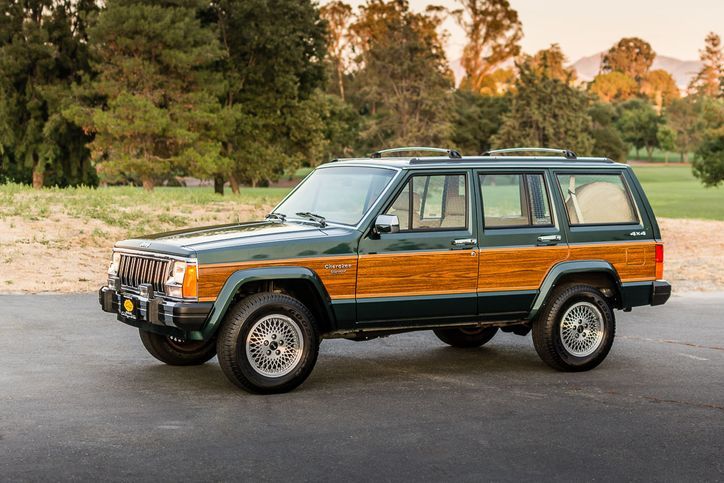
The Briarwood was a nostalgic nod to the classic Wagoneer, featuring unique exterior details.
Production Years: 1991–1992
- Engine Options:
- 4.0-liter inline-six engine with 190 HP.
- Transmission:
- 4-speed automatic.
- 4×4 Options:
- Selec-Trac 4WD system.
- Interior:
- Leather upholstery with wood accents.
- Power windows, locks, and seats.
- Exterior:
- Faux woodgrain paneling on the sides.
- Distinctive Briarwood badging.
- Chrome roof rack.
- Notable Features:
- Catered to buyers who appreciated classic Jeep aesthetics with modern functionality.
5. Jeep Cherokee XJ Pioneer
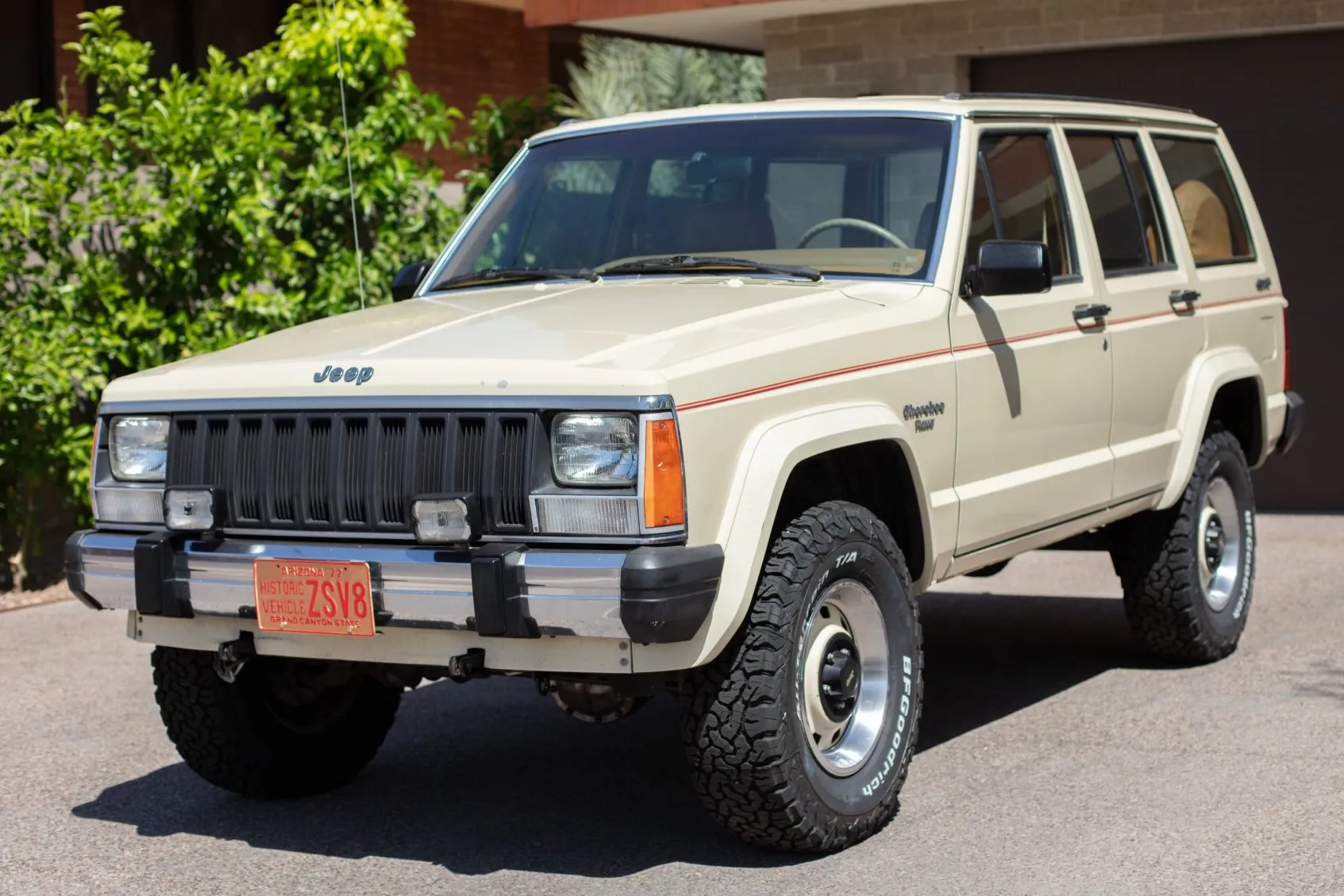
The Pioneer trim catered to adventurers, emphasizing durability and utility.
Production Years: 1984–1990
- Engine Options:
- Standard 2.5L I4 or optional 4.0L I6.
- Transmission:
- Five-speed manual or automatic.
- 4×4 Options:
- Command-Trac part-time 4WD.
- Interior:
- Vinyl and cloth upholstery for easy cleaning.
- Basic audio system with optional cassette player.
- Exterior:
- Black bumpers and fender flares.
- Skid plates for added protection.
- Optional off-road tires.
- Notable Features:
- Heavy-duty suspension package for rugged trails.
6. Jeep Cherokee XJ Pioneer Olympic Edition
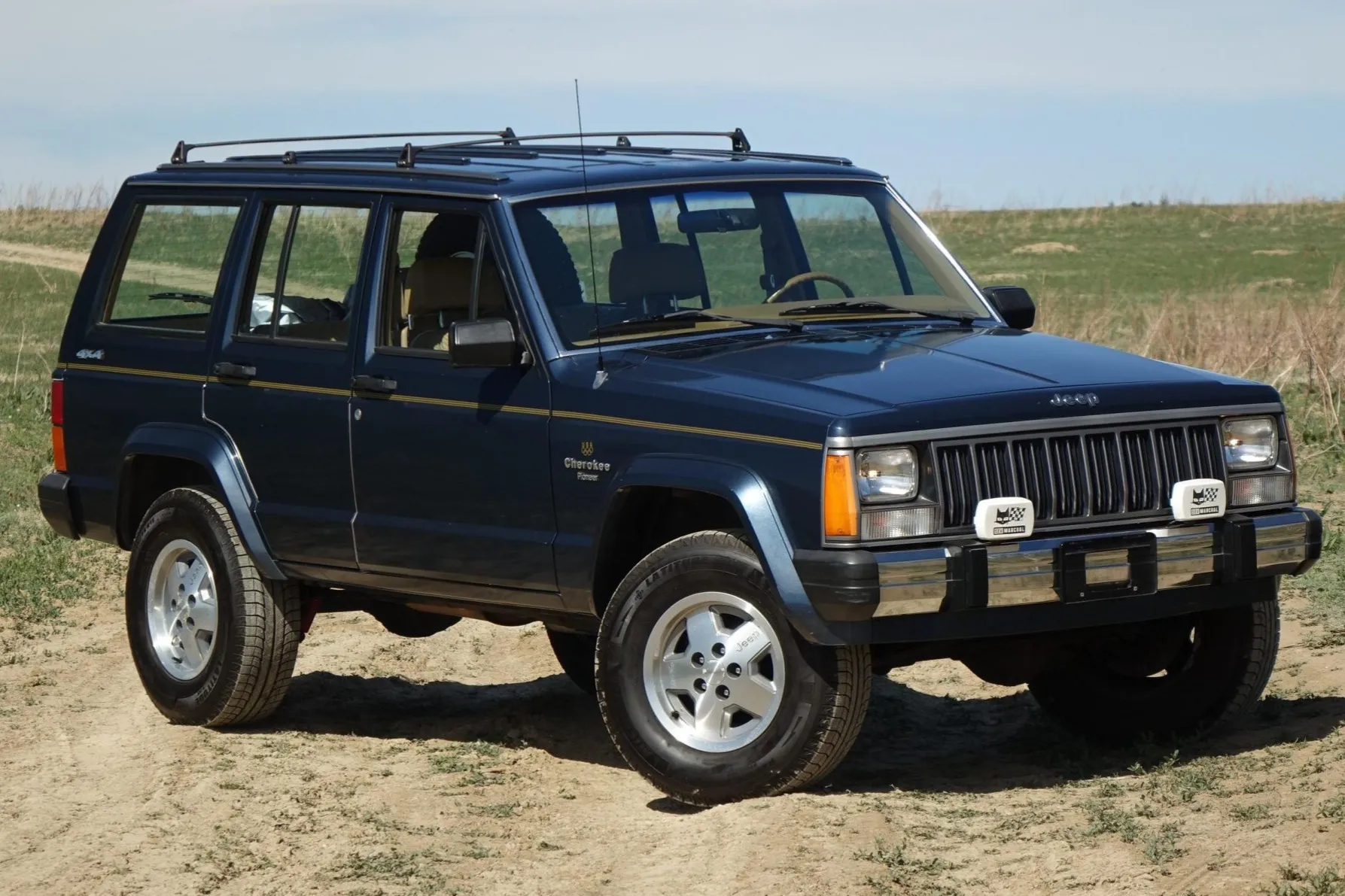
The Olympic Edition added unique styling to celebrate Jeep’s Olympic sponsorship.
Production Year: 1988
- Engine Options:
- 4.0-liter inline-six with 190 HP.
- Transmission:
- 4-speed automatic.
- 4×4 Options:
- Selec-Trac system.
- Interior:
- Custom floor mats with Olympic logos.
- High-quality cloth seats.
- Exterior:
- Special badging and decals.
- Custom wheels.
- Notable Features:
- Limited-edition model with collectible appeal.
7. Jeep Cherokee XJ Chief
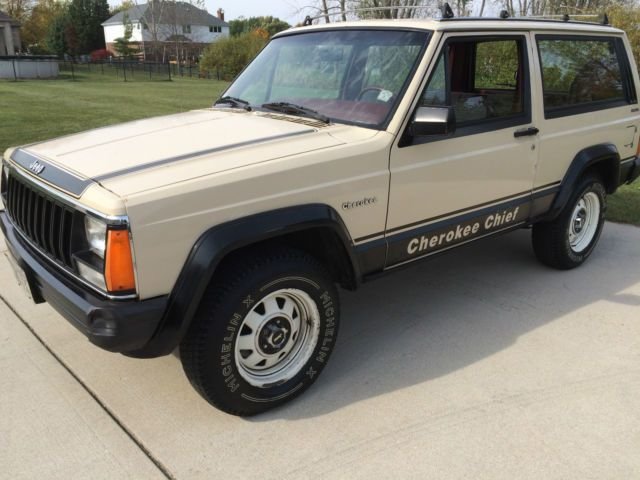
The Chief trim focused on bold styling and off-road readiness.
Production Years: 1985–1990
- Engine Options:
- 4.0-liter inline-six with 190 HP.
- Transmission:
- 4-speed automatic.
- 4×4 Options:
- Command-Trac or Selec-Trac.
- Interior:
- Durable cloth upholstery.
- All-weather floor mats.
- Exterior:
- Unique Chief decals and bright color options.
- Blacked-out trim and large tires.
- Notable Features:
- Off-road-focused design with standout aesthetics.
8. Jeep Cherokee XJ Sport
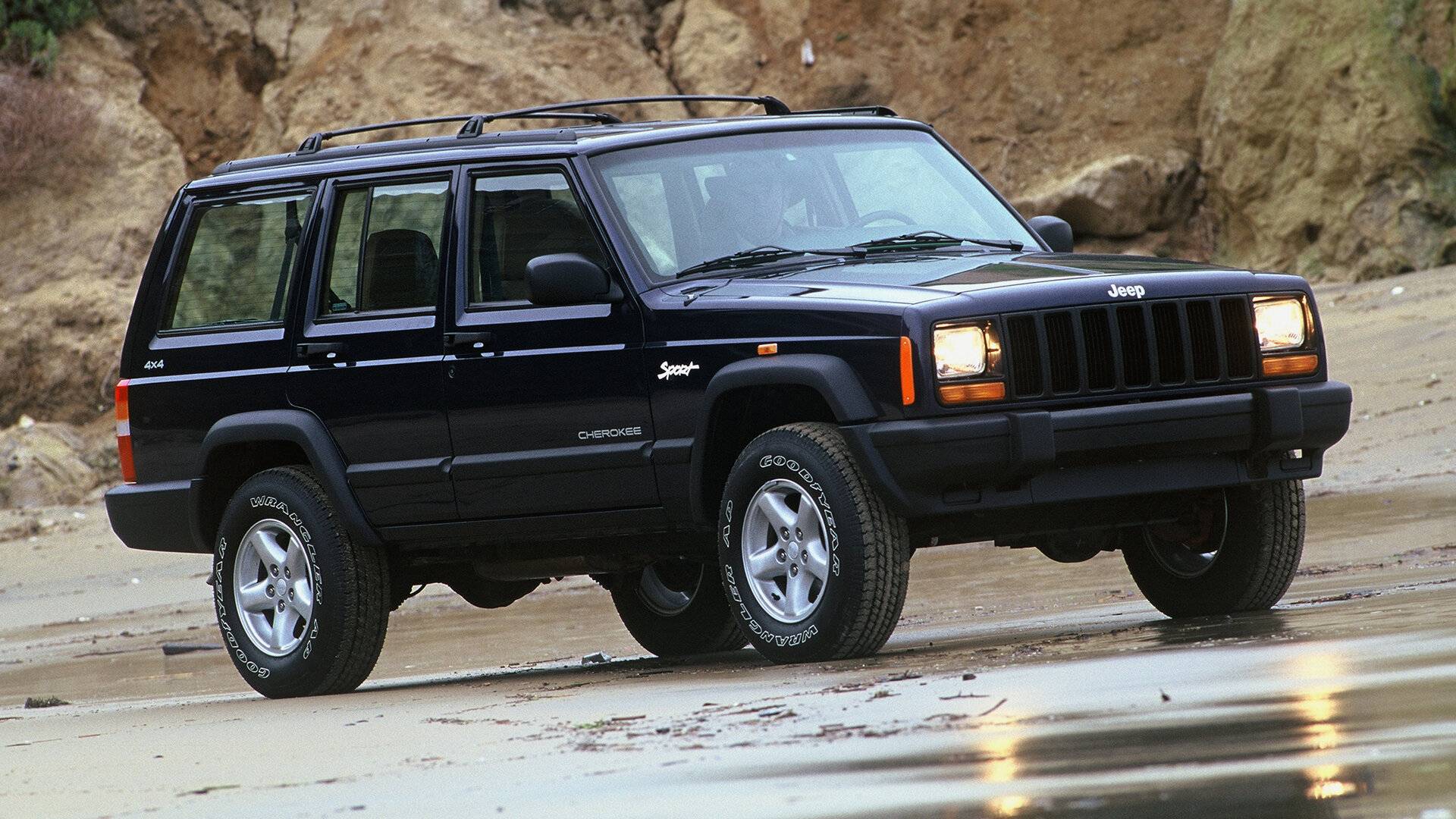
The Jeep Cherokee Sport trim became one of the most popular XJ variants, offering a balance of features and affordability.
Production Years: 1988–2001
- Engine Options:
- 4.0-liter inline-six with 190 HP.
- Transmission:
- Five-speed manual or automatic.
- 4×4 Options:
- Command-Trac system.
- Interior:
- Cloth seats with optional upgrades.
- AM/FM stereo with cassette player.
- Exterior:
- Body-colored trim.
- Sport badging.
- Notable Features:
- An excellent all-around option for families and adventurers alike.
9. Jeep Cherokee XJ Country
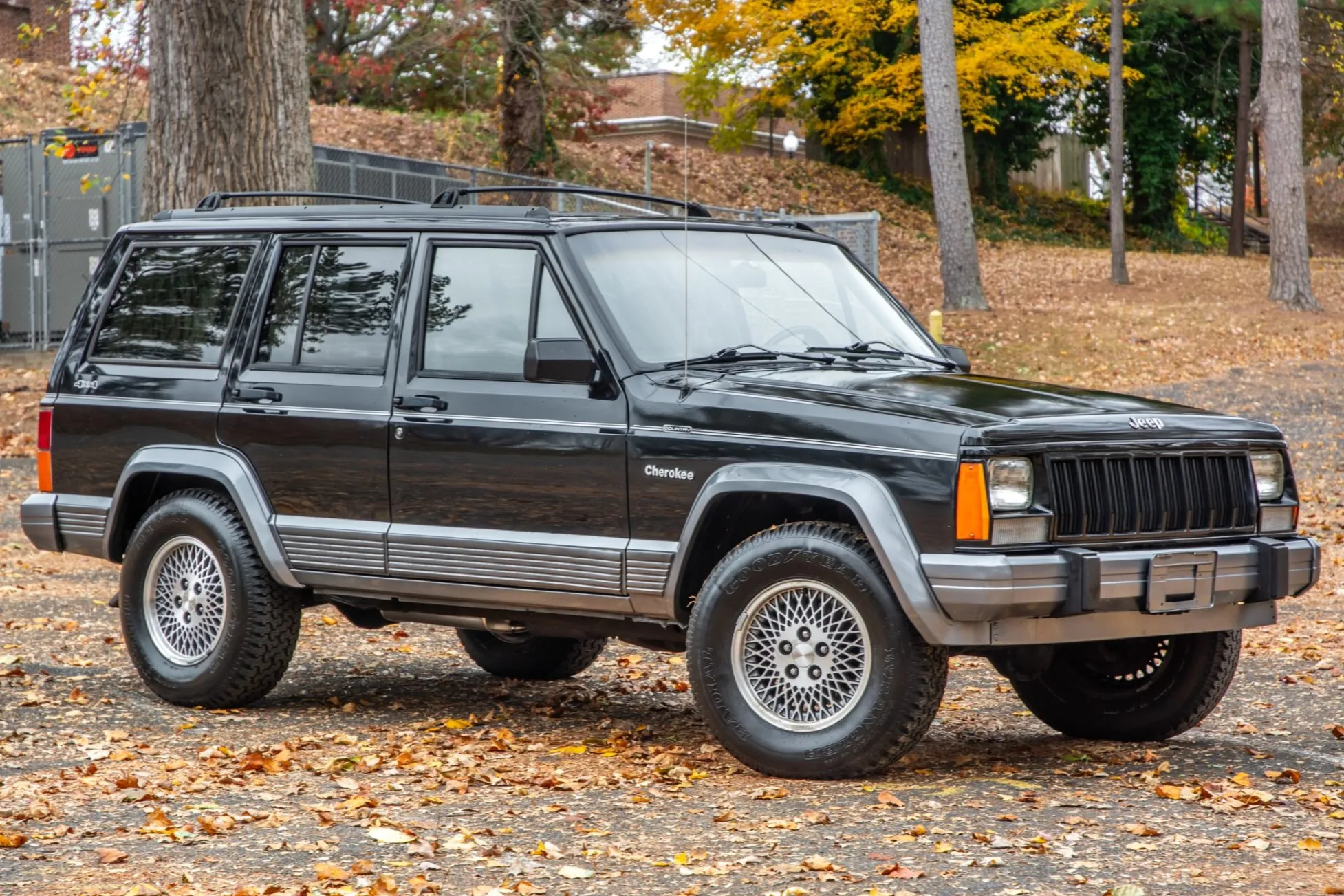
The Country trim brought a refined aesthetic to the XJ lineup.
Production Years: 1993–1997
- Engine Options:
- 4.0-liter inline-six with 190 HP.
- Transmission:
- Automatic.
- 4×4 Options:
- Selec-Trac system.
- Interior:
- Premium cloth upholstery.
- Woodgrain dashboard accents.
- Exterior:
- Chrome bumpers and trim.
- Fog lights.
- Notable Features:
- Geared towards buyers who wanted style without sacrificing capability.
10. Jeep Cherokee XJ Classic
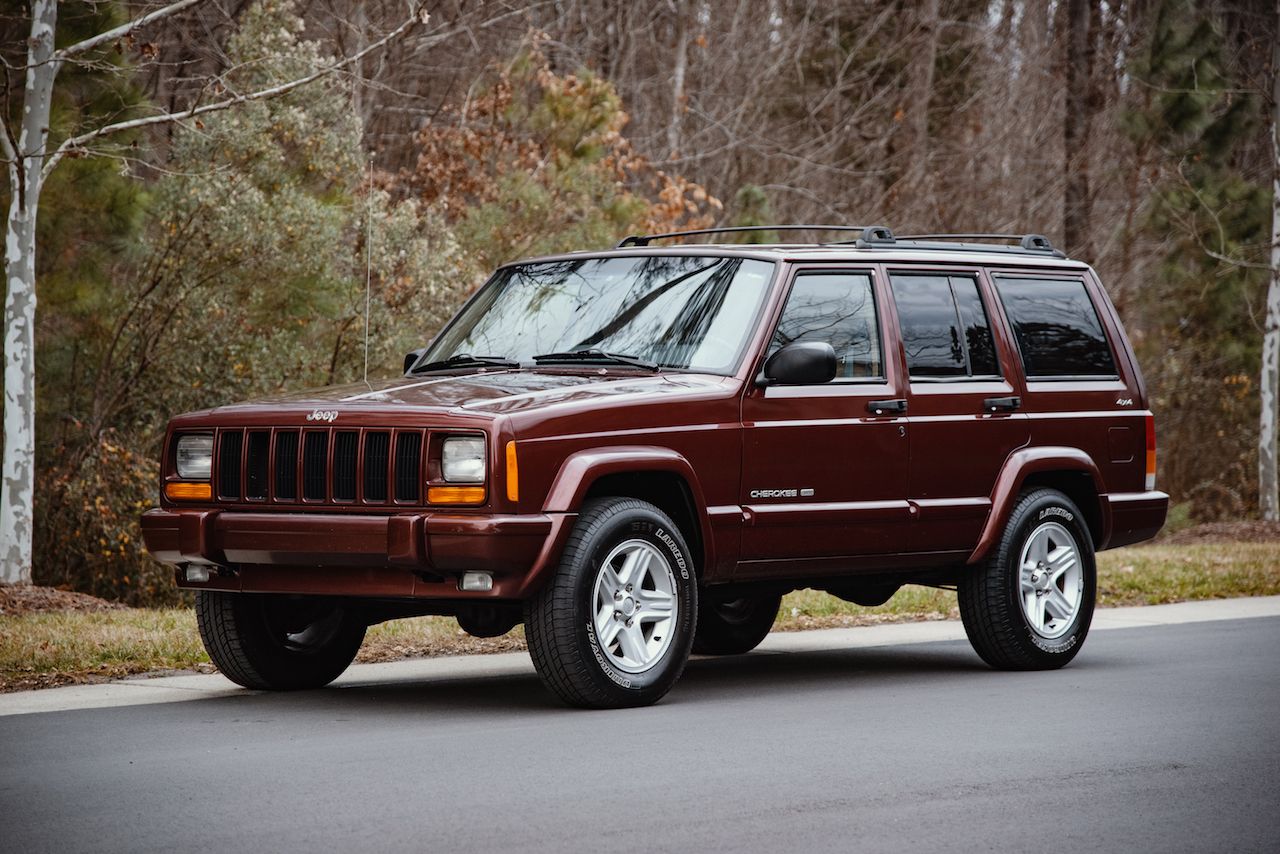
The Classic trim was a tribute to Jeep’s rugged heritage.
Production Years: 1996–2001
- Engine Options:
- 4.0-liter inline-six with 190 HP.
- Transmission:
- Automatic.
- 4×4 Options:
- Command-Trac system.
- Interior:
- Upgraded seats and sound system.
- Exterior:
- Classic badging.
- Simplistic design.
- Notable Features:
- Aimed at Jeep purists.
11. Jeep Cherokee XJ Limited
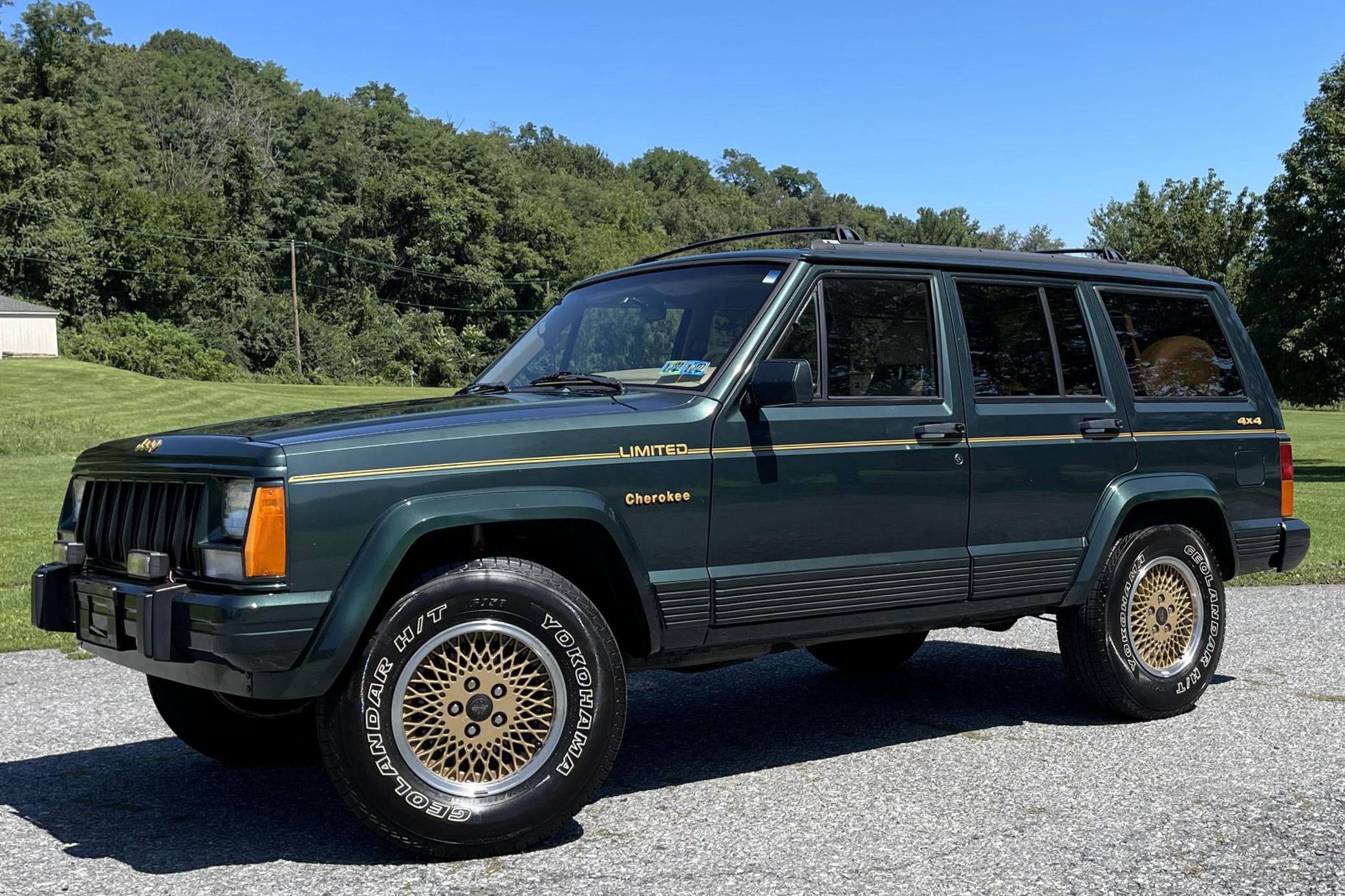
The Limited trim represented the pinnacle of luxury for the XJ.
Production Years: 1988–2001
- Engine Options:
- 4.0-liter inline-six with 190 HP.
- Transmission:
- Automatic.
- 4×4 Options:
- Full-time Selec-Trac.
- Interior:
- Full leather upholstery.
- Heated seats.
- Advanced audio system.
- Exterior:
- Alloy wheels.
- Body-colored bumpers and trim.
- Notable Features:
- Best suited for those who wanted luxury and capability.
12. Jeep Cherokee XJ Laredo
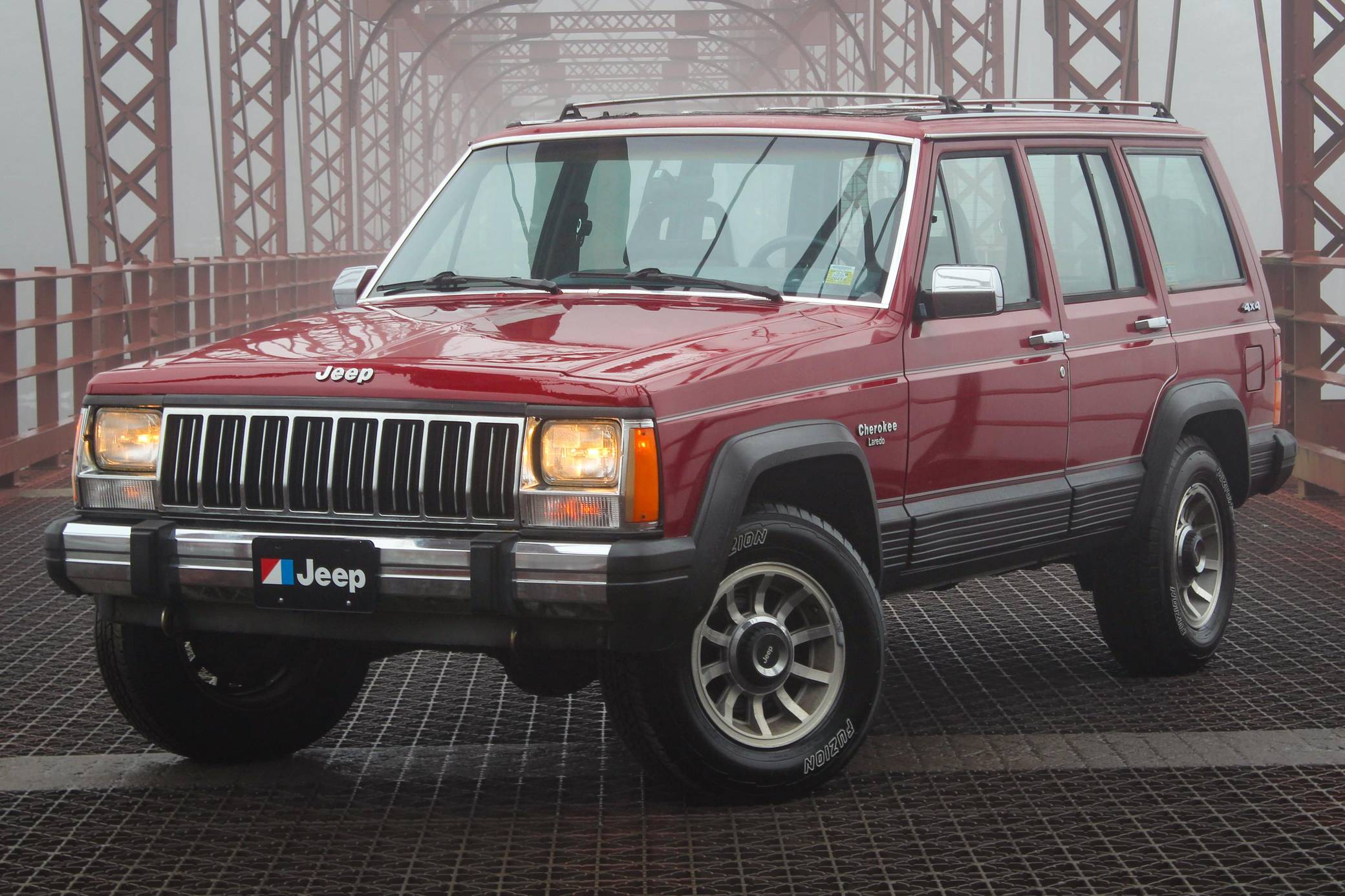
The Laredo trim combined ruggedness with comfort.
Production Years: 1985–1992
- Engine Options:
- 4.0-liter inline-six with 190 HP.
- Transmission:
- five-speed manual or automatic.
- 4×4 Options:
- Command-Trac or Selec-Trac.
- Interior:
- Two-tone upholstery.
- Upgraded dashboard design.
- Exterior:
- Laredo-specific badging.
- Chrome wheels.
- Notable Features:
- Targeted at outdoor enthusiasts who wanted style.
13. Jeep Cherokee XJ Orvis Edition
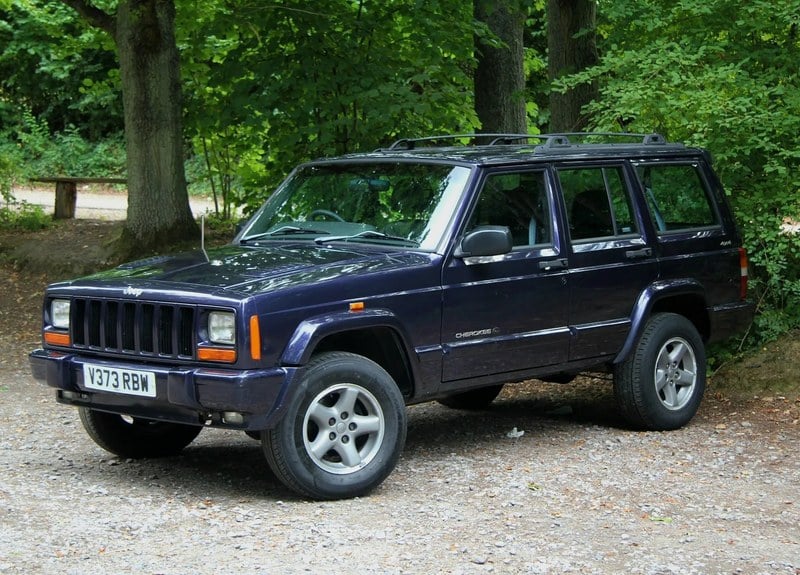
The Orvis Edition was a limited-production, upscale version of the Jeep Cherokee XJ, designed to appeal to luxury enthusiasts and collectors in the United Kingdom.
Production Years: 1999–2000
Engine Options:
- 4.0L inline-six producing 190 HP and 225 lb-ft of torque, paired with the Aisin AW-4 four-speed automatic transmission.
- Optional VM Motori 2.5L Turbo-Diesel four-cylinder generating 115 HP and 221 lb-ft of torque, paired with a five-speed manual transmission.
Transmission:
- Aisin AW-4 automatic (4.0L engine).
- Five-speed manual (2.5L Turbo-Diesel engine).
4×4 Options:
- Command-Trac part-time 4WD system.
Interior:
- Ruffled leather seats with six-way electric adjustment.
- Leather door panels and spare wheel cover.
- Orvis logo embossed on headrests and ashtray lid.
- AM/FM radio with cassette, Infinity amplifier, and six Infinity speakers.
- Remote keyless entry and cruise control.
- Heated driver and passenger mirrors.
- Air conditioning for enhanced comfort.
Exterior:
- Special Orvis badging and unique Orvis floor mats with enamel logos.
- 16-inch ‘Icon’ alloy wheels with a two-tone color scheme.
- Simulated hood vents and a tailgate spoiler with an integrated LED brake light.
Notable Features:
- Premium luxury appointments paired with rugged 4×4 capability.
- Distinct styling and exclusive badging made it a collector’s favorite.
Target Audience:
- Aimed at Jeep enthusiasts seeking luxury and exclusivity in a capable off-road SUV.
14. Jeep Cherokee XJ Freedom
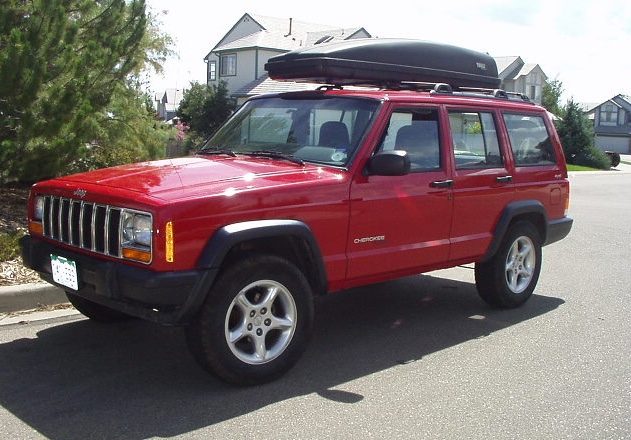
The Freedom edition added patriotic flair.
Production Year: 2000
- Engine Options:
- 4.0-liter inline-six with 190 HP.
- Transmission:
- Automatic.
- 4×4 Options:
- Selec-Trac.
- Interior:
- Special-edition seat fabrics.
- Freedom logos throughout.
- Exterior:
- Red, white, and blue accents.
- Notable Features:
- Celebrated Jeep’s American roots.
15. Jeep Cherokee XJ 60th Anniversary Edition
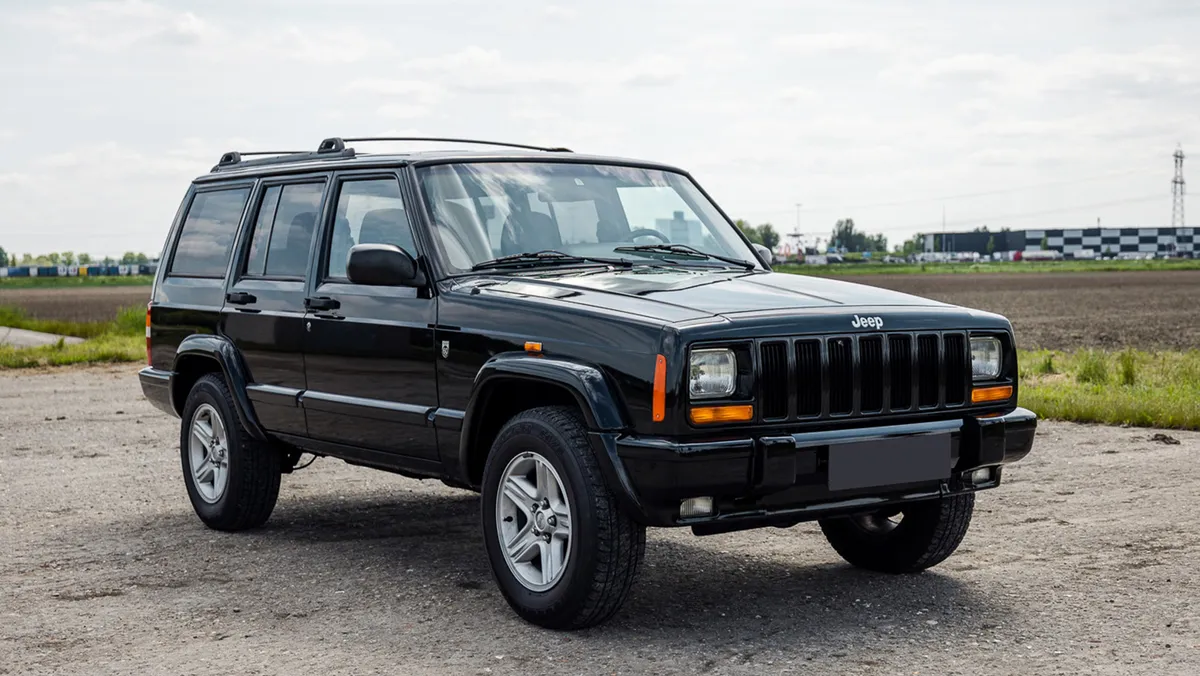
This special edition commemorated Jeep’s storied history.
Production Year: 2001
- Engine Options:
- 4.0-liter inline-six with 190 HP.
- Transmission:
- Automatic.
- 4×4 Options:
- Selec-Trac.
- Interior:
- Anniversary-specific badging.
- Leather-trimmed seats.
- Exterior:
- Unique color schemes.
- Exclusive badging.
- Notable Features:
- Collectible model celebrating Jeep’s heritage.
Each trim of the Jeep Cherokee XJ catered to different needs, from basic utility to luxurious comfort, solidifying the Jeep XJ as a versatile and iconic vehicle.
Intriguing Insights into XJ Jeep Models
The XJ Jeep holds a special place in automotive history, not only for its groundbreaking unibody design but also for its diverse lineup of models. Each model year introduced unique features, updates, and trims that appealed to different audiences. Let’s take a closer look at the most intriguing facts about XJ Jeep models and what made them iconic.
1984 Model Year of XJ Jeep Base Model
The debut of the XJ Jeep Base Model marked the start of a new era in SUV design. Practical and affordable, this trim offered rugged capability at a budget-friendly price, appealing to first-time SUV buyers.
1997 Model Year of XJ Jeep SE
The XJ Jeep SE received significant updates in 1997, including a refreshed interior and a modernized exterior design. These changes made it more appealing to buyers seeking style without compromising on the vehicle’s ruggedness.
1986 Model Year of XJ Jeep Wagoneer Limited
A standout in luxury, the XJ Jeep Wagoneer Limited featured a digital dashboard—a cutting-edge feature for its time. This model set a benchmark for upscale SUVs and highlighted Jeep’s ability to combine luxury with capability.
1991 Model Year of XJ Jeep Briarwood
With woodgrain panels and premium interiors, the XJ Jeep Briarwood delivered a nostalgic nod to the classic Wagoneer while incorporating the modern features of the era.
1988 Model Year of XJ Jeep Pioneer
Known for its ruggedness, the XJ Jeep Pioneer was upgraded in 1988 with optional skid plates and towing packages, making it a favorite among adventurers and outdoor enthusiasts.
1988 Model Year of XJ Jeep Pioneer Olympic Edition
Celebrating Jeep’s Olympic sponsorship, the XJ Jeep Pioneer Olympic Edition featured exclusive decals and badges, offering a touch of history and collectability.
1985 Model Year of XJ Jeep Chief
The XJ Jeep Chief captured attention with its bold styling, off-road-ready features, and standout decals. It quickly became a go-to option for those seeking adventure.
1999 Model Year of XJ Jeep Sport
The XJ Jeep Sport became a bestseller in 1999 due to its balance of affordability, rugged capability, and upgraded safety features.
1993 Model Year of XJ Jeep Country
The XJ Jeep Country was introduced as a refined trim with chrome accents and upgraded interiors, catering to buyers looking for a stylish yet practical SUV.
1996 Model Year of XJ Jeep Classic
The XJ Jeep Classic debuted in 1996, blending rugged capability with timeless design, appealing to Jeep purists who valued simplicity and durability.
1998 Model Year of XJ Jeep Limited
Body-colored bumpers, premium sound systems, and luxurious interiors defined the XJ Jeep Limited in 1998, making it the pinnacle of luxury in the Cherokee lineup.
1987 Model Year of XJ Jeep Laredo
The XJ Jeep Laredo stood out in 1987 with two-tone paint and standard power accessories, offering a perfect blend of style and utility.
2000 Model Year of XJ Jeep Freedom Edition
A patriotic nod, the XJ Jeep Freedom Edition celebrated Jeep’s American roots with unique red, white, and blue accents and commemorative badging.
2001 Model Year of XJ Jeep 60th Anniversary Edition
The final production year saw the release of the XJ Jeep 60th Anniversary Edition, commemorating Jeep’s storied history with high-end finishes and exclusive badges.
Why the XJ Jeep Models Matter
Each XJ Jeep model year brought something new to the table, whether through innovative features, refined trims, or commemorative editions. These models not only showcased Jeep’s ability to evolve but also solidified the XJ Jeep’s status as a timeless icon in the automotive world.
The two-door versions of the Jeep Cherokee XJ were available throughout its production years from 1984 to 2001. These models shared many characteristics with their four-door counterparts but featured a more compact and sporty design that appealed to a specific segment of buyers.
Two-Door Jeep Cherokee XJ Models and Trims:
- Jeep XJ Base Model (1984–2001)
- Offered in both two-door and four-door variants.
- Aimed at budget-conscious buyers.
- Rugged simplicity with minimal interior and exterior upgrades.
- Jeep XJ Sport (1988–2001)
- Available as a two-door model throughout its production.
- Popular due to its balance of affordability and features.
- Offered with the legendary 4.0L Inline-6 engine in later years.
- Jeep XJ SE (1984–1993, 1996–1997)
- Entry-level trim, often seen in the two-door configuration.
- Basic features with optional upgrades.
- Jeep XJ Pioneer (1984–1990)
- Aimed at adventurers, this trim was also available as a two-door.
- Featured rugged enhancements like skid plates and off-road tires.
- Jeep XJ Chief (1985–1989)
- Known for its bold styling and decals, the Chief trim came in a two-door option.
- Targeted off-road enthusiasts.
- Jeep XJ Laredo (1985–1992)
- Available as a two-door model in earlier production years.
- Positioned as a step up from the base models, offering more comfort features.
- Jeep XJ Classic (1996–2001)
- Later years saw the Classic trim offered in both two-door and four-door configurations.
- Focused on Jeep purists and those seeking a more traditional Cherokee experience.
- Jeep XJ Limited (1984–1992)
- In early production years, the two-door Limited was available but rare.
- Geared towards buyers wanting luxury in a sporty, compact SUV.
Key Features of the Two-Door XJ:
- Design:
- Longer doors for easier access to the rear seats.
- A sportier, more compact look compared to the four-door models.
- Interior:
- The same spaciousness as the four-door models in the front but slightly reduced rear-seat accessibility.
- Utility:
- Retained the XJ’s off-road capability and rugged build in a lighter and more maneuverable form.
Popularity and Legacy:
- The two-door versions appealed to buyers looking for a more affordable, lighter, or sportier version of the Jeep Cherokee XJ. While less practical for families, these models were often chosen by off-road enthusiasts and younger drivers.
Rarity:
- By the late 1990s, the four-door models became more popular due to their practicality, making two-door XJs less common in later production years.
Comprehensive Technical Overview of Jeep Cherokee XJ Engines and Gearboxes
The Jeep Cherokee XJ offered a wide range of engines and gearboxes throughout its production years, reflecting its versatility across markets. Below is a detailed breakdown of all engine options and their corresponding technical details, followed by the various transmission systems that complemented these engines.
Jeep Cherokee XJ Engines
Gasoline Engines
- 2.5L AMC Inline-4 (150 cu in)
- Years Used: 1984–2000.
- Output:
- Early versions: single-barrel carburetor ~105 HP and 132 lb-ft of torque.
- upgraded to Renix TBI (117 HP): ~118 HP and 135 lb-ft of torque
- Later versions (with Chrysler MPI): ~125 HP and 139 lb-ft of torque.
- Induction: Available in carbureted (early) and multi-port fuel-injected (later) variants.
- Configuration: Inline-4, overhead valve (OHV).
- Bore x Stroke: 3.88 in x 3.19 in.
- Compression Ratio: 8.8:1 to 9.2:1 (depending on model year).
- Use Case: Offered in entry-level models, this engine provided reliable and economical performance.
- 4.0L AMC/PowerTech Inline-six (242 cu in)
- Years Used: 1987–2001.
- Output:
- Early models (Renix MPI): ~173–190 HP and 224–225 lb-ft of torque.
- Later models (Chrysler MPI): Tuned for emissions compliance, delivering 178–193 HP.
- Induction: Multi-port fuel injection (MPI).
- Configuration: Inline-6, overhead valve (OHV).
- Bore x Stroke: 3.88 in x 3.41 in.
- Compression Ratio: 8.8:1.
- Legendary Reputation: Known for durability, low-end torque, and off-road capability. A favorite among enthusiasts.
- 2.8L GM LR2 V6 (173 cu in)
- Years Used: 1984–1986.
- Output: 110–115 HP and ~150 lb-ft of torque.
- Induction: Carbureted.
- Configuration: V6, overhead valve (OHV).
- Bore x Stroke: 3.50 in x 3.00 in.
- Compression Ratio: ~8.5:1.
- Use Case: Offered as an alternative to the 4.0L I6, but less favored due to its lower power output and reliability issues.
Diesel Engines
- 2.1L Renault J8S Turbo Diesel (126 cu in)
- Years Used: 1985–1990 (international markets).
- Output: ~85–88 HP and ~135–140 lb-ft of torque.
- Induction: Turbocharged with mechanical fuel injection.
- Configuration: Inline-4, overhead valve (OHV).
- Bore x Stroke: 3.50 in x 3.54 in.
- Compression Ratio: ~21.0:1.
- Use Case: Efficient and well-suited for European and developing markets, but lacked power for heavy-duty use.
- 2.5L VM Motori 425 OHV Turbo Diesel (153 cu in)
- Years Used: 1994–2001 (select markets).
- Output: ~114–116 HP and ~200 lb-ft of torque.
- Induction: Turbocharged with direct injection.
- Configuration: Inline-4, overhead valve (OHV).
- Bore x Stroke: 3.47 in x 3.94 in.
- Compression Ratio: ~21.5:1.
- Use Case: Known for strong torque and reliability, making it suitable for towing and off-road use.
Chinese Market Engines (Post-2001)
- 2.0L Geely 4G20 Inline-4
- Output: ~116 HP.
- Use Case: Fuel-efficient engine adapted for the BAW Qishi.
- 2.4L Mitsubishi 4G64 Inline-4
- Output: ~123 HP.
- Use Case: Found in the Beijing Jeep 2500; balanced performance for urban and rural use.
- 2.5L Beijing C498QA Inline-4
- Output: ~140 HP.
- Use Case: Adapted for the Jeep 2500 and 2700 in Chinese markets.
Jeep Cherokee XJ Gearboxes
Manual Transmissions
- 4-Speed Aisin AX-4
- Application: Early 2.5L I4 models.
- Features: Basic and reliable, but lacked a fifth gear for highway efficiency.
- 5-Speed Aisin AX-5
- Application: Paired with 2.5L I4 and diesel engines.
- Features: Lightweight and durable, well-suited for the smaller engines.
- 5-Speed Peugeot BA-10/5
- Application: Early 4.0L I6 models (1987–1989).
- Features: Known for reliability issues under high torque, later replaced.
- 5-Speed Aisin AX-15
- Application: Replaced the BA-10/5 in 1989; used with the 4.0L I6 and diesel engines.
- Features: Robust design capable of handling the high torque of the I6 engine.
- 5-Speed NVG NV3550
- Application: Late-model 4.0L I6 variants.
- Features: Improved smoothness and durability over the AX-15.
Automatic Transmissions
- 3-Speed Chrysler A904/30RH
- Application: Early 2.5L and V6 models.
- Features: Simple design but lacked overdrive, limiting fuel efficiency.
- 4-Speed Aisin AW-4
- Application: Widely used with 4.0L I6 models (1987–2001).
- Features: Highly reliable and smooth, featuring electronic control for precise shifting.
- Ratios: Overdrive gear improved highway fuel economy.
The Cherokee XJ’s extensive engine and gearbox options reflect its adaptability to diverse markets and customer needs. The robust 4.0L Inline-6 paired with the Aisin AW-4 automatic or AX-15 manual became legendary for their performance and reliability, while international markets benefited from the efficient diesel engines. This mechanical versatility is a significant reason for the XJ’s enduring legacy in the SUV world.
Jeep XJ’s Dana 44 Axle Specifics
The Dana 44 is a robust and versatile axle that has been a favorite among off-road enthusiasts and vehicle manufacturers for decades. In the Jeep Cherokee XJ, the Dana 44 was primarily offered as an optional rear axle, typically included in models equipped with towing packages or intended for heavy-duty use. Here’s a detailed breakdown of the Dana 44 axle’s specifics:
1. Key Specifications
Basic Dimensions
- Ring Gear Diameter: 8.5 inches.
- Axle Shaft Diameter: 1.31 inches.
- Axle Shaft Spline Count: Typically 30 splines for the XJ, though aftermarket options offer increased spline counts for added strength.
- Tube Diameter: 2.75 inches.
- Wall Thickness: 0.25 inches, providing excellent durability under heavy loads.
Gear Ratios Available
- Factory options for the Jeep XJ commonly included:
- 3.54:1
- 3.73:1
- 4.10:1
- Other ratios (up to 5.89:1) are available through aftermarket upgrades.
- These ratios allowed for better torque multiplication in off-road conditions or when towing.
Weight
- Approximately 150–180 pounds, depending on configuration.
2. Features and Design
Semi-Floating Design
- The Dana 44 used in the XJ is a semi-floating axle, meaning the axle shafts bear the weight of the vehicle and transfer torque.
- Advantages:
- Simpler and lighter than full-floating designs.
- Adequate for the XJ’s size and weight class.
High-Strength Components
- Made from high-grade steel, ensuring durability even under extreme stress.
- The ring and pinion gears were precision-engineered for longevity and performance.
Differentials
- Offered with open differentials as standard.
- Optional limited-slip differentials (LSD), like the Trac-Lok, provided enhanced traction in low-grip conditions by redistributing power between the wheels.
3. Applications in the Jeep XJ
Usage
- The Dana 44 was not standard across all XJ models but was offered as part of the towing package in certain trims, particularly in earlier production years (1987–1989).
- Its inclusion made the XJ more capable of handling heavier loads and tougher terrains, appealing to buyers with specific utility needs.
Why the Dana 44?
- The stronger axle shafts and larger ring gear diameter gave the Dana 44 a significant advantage over the lighter-duty Dana 35, which was standard in most XJ models.
- For off-road enthusiasts and those needing more durability, the Dana 44 became a preferred upgrade or factory option.
4. Off-Road Capability
The Dana 44’s robust design made it a standout choice for off-road applications:
- Ground Clearance: The design allowed for adequate clearance while maintaining durability.
- Customization Potential:
- Aftermarket lockers (e.g., ARB Air Lockers) for improved off-road traction.
- Heavy-duty axle shafts for increased torque-handling capacity.
- Strength-to-Weight Ratio: Balanced enough to handle tough trails without significantly increasing vehicle weight.
5. Comparison to Dana 35
| Feature | Dana 35 | Dana 44 |
|---|---|---|
| Ring Gear Diameter | 7.5625 inches | 8.5 inches |
| Axle Shaft Spline Count | 27 splines | 30 splines |
| Max Torque Handling | Lower | Higher |
| Applications | Standard on most XJ models | Optional with towing package |
- Durability: The Dana 44 could handle significantly more torque and load compared to the Dana 35, reducing the likelihood of axle shaft breakage in extreme conditions.
- Upgrade Potential: The Dana 44 has a vast aftermarket ecosystem, allowing for gear ratio changes, stronger shafts, and locking differentials.
6. Upgrades and Modifications
The Dana 44’s popularity among off-roaders and builders stems from its robust design and upgrade potential:
- Chromoly Axle Shafts: Stronger than stock shafts, ideal for high-torque applications.
- Locking Differentials: Mechanical or air lockers enhance traction for serious off-roading.
- Disc Brake Conversions: Upgrading from drum brakes to disc brakes improves stopping power and reduces maintenance.
- High Pinion Gears: For improved ground clearance and better driveline angles in lifted vehicles.
7. Legacy and Popularity
- The Dana 44 is considered one of the most durable and versatile axles ever produced, used not only in the Jeep XJ but also in other iconic vehicles like the Jeep Wrangler, Ford Broncos, and Chevrolet trucks.
- Its modular design and strong aftermarket support ensure its relevance decades after its introduction.
The Dana 44 axle in the Jeep Cherokee XJ exemplifies strength, reliability, and adaptability. While not standard in all models, its inclusion as part of the towing package or as an upgrade makes it a prized feature for enthusiasts and utility users. Its robust construction, coupled with vast customization options, ensures that the Dana 44 remains a cornerstone of the XJ’s legendary durability and off-road capability.
Who were the main component suppliers for the Jeep Cherokee XJ?
The Jeep Cherokee XJ, produced from 1984 to 2001, was a result of collaboration with various suppliers who provided essential components, contributing to its durability and performance. Here’s an overview of key suppliers, their contributions, and technical details:
1. Aisin Seiki Co., Ltd.
- Components Supplied:
- Transmissions:
- AX4: A 4-speed manual transmission used in early XJ models equipped with the 2.5L inline-four engine.
- AX5: A 5-speed manual transmission utilized in models with the 2.5L engine, offering improved gear ratios for better performance.
- AX15: A robust 5-speed manual transmission introduced in 1988, paired with the 4.0L inline-six engine, known for its durability and smooth shifting.
- Transmissions:
- Technical Details:
- Materials: These transmissions featured aluminum housings, reducing weight while maintaining structural integrity.
- Design Timeline: The AX series transmissions were developed in the early 1980s, with the AX15 introduced in 1988 to accommodate the increased torque of the 4.0L engine.
2. Dana Holding Corporation
- Components Supplied:
- Axles:
- Dana 30: Front axle used across various XJ models, known for its strength and reliability in off-road conditions.
- Dana 35 and Dana 44: Rear axles, with the Dana 44 offered in specific models requiring higher load capacities.
- Axles:
- Technical Details:
- Materials: Constructed from high-strength steel to withstand rigorous use.
- Design Timeline: The Dana 30 and 35 axles have origins dating back to the 1960s, with continuous improvements leading up to their use in the XJ.
3. Seiko Seiki Co., Ltd.
- Components Supplied:
- Air Conditioning Compressors: Provided efficient climate control systems, enhancing passenger comfort.
- Technical Details:
- Materials: Utilized lightweight aluminum components to improve vehicle efficiency.
- Design Timeline: Developed in the late 1970s, these compressors were refined for automotive applications by the early 1980s.
4. New Process Gear (a division of Chrysler)
- Components Supplied:
- Transfer Cases:
- NP231 (Command-Trac): A part-time transfer case allowing shift-on-the-fly engagement of four-wheel drive.
- NP242 (Selec-Trac): A full-time transfer case offering both full-time and part-time four-wheel-drive modes for versatility in various driving conditions.
- Transfer Cases:
- Technical Details:
- Materials: Housings made from aluminum to reduce weight, with internal components crafted from hardened steel for durability.
- Design Timeline: The NP231 was introduced in the mid-1980s, with the NP242 following shortly after to provide more options for consumers.
5. American Motors Corporation (AMC)
- Components Supplied:
- Engines:
- 2.5L Inline-Four: An efficient engine option for base models, offering a balance between power and fuel economy.
- 4.0L Inline-Six: Introduced in 1987, this engine became renowned for its durability and performance, contributing significantly to the XJ’s reputation.
- Engines:
- Technical Details:
- Materials: Engine blocks and heads were made from cast iron, providing longevity and resistance to wear.
- Design Timeline: The 2.5L engine was developed in the late 1970s, with the 4.0L engine designed in the mid-1980s to offer enhanced performance.
6. Mitsubishi Electric Corporation
- Components Supplied:
- Electrical Systems: Including alternators and starters, ensuring reliable vehicle operation.
- Technical Details:
- Materials: High-quality copper windings and durable housings to withstand various environmental conditions.
- Design Timeline: Automotive electrical components were continually developed through the 1970s and 1980s to meet increasing vehicle demands.
7. Bendix Corporation
- Components Supplied:
- Braking Systems: Provided components such as brake calipers, master cylinders, and related hardware, ensuring effective stopping power.
- Technical Details:
- Materials: Utilized cast iron and steel for critical components to ensure durability and heat resistance.
- Design Timeline: Brake system components were part of ongoing development to improve vehicle safety standards throughout the 1980s.
These suppliers and their meticulously designed components played a pivotal role in the Jeep Cherokee XJ’s success, ensuring reliability, performance, and longevity that have become synonymous with the model.
The Command-Trac 4×4 on the Jeep XJ
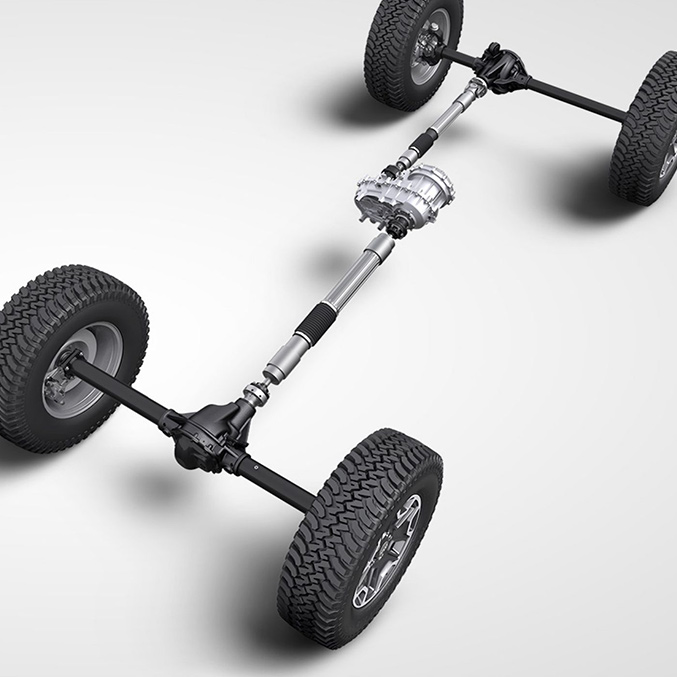
The Command-Trac 4×4 system, a key feature of many Jeep Cherokee XJ models, was designed to provide robust off-road performance with a focus on simplicity and reliability. Here’s a detailed look at how it differed technically:
1. Type of 4×4 System
- Part-Time 4WD:
- Command-Trac is a part-time four-wheel-drive system.
- This means it is intended for use only in low-traction conditions (e.g., off-road, snow, mud).
- Driving in 4WD on dry pavement is not recommended because it lacks a center differential, causing drivetrain binding and potential damage.
2. Transfer Case
- NP231 Transfer Case:
- The heart of the Command-Trac system is the New Process 231 (NP231) transfer case.
- It offers two-speed operation:
- 2H (Two-Wheel Drive, High Range): For normal driving on dry pavement.
- 4H (Four-Wheel Drive, High Range): Engaged for slippery or loose terrain.
- Neutral: Used for towing.
- 4L (Four-Wheel Drive, Low Range): Provides maximum torque and control for steep climbs, descents, and extreme off-road conditions.
3. Technical Features
- Locking Front and Rear Driveshafts:
- When 4WD is engaged, the front and rear driveshafts lock together, delivering equal power to the front and rear axles for better traction.
- Gear Ratios:
- High Range (4H): Maintains a 1:1 ratio for general off-road driving.
- Low Range (4L): Provides a 2.72:1 gear reduction, multiplying torque for tough terrain.
- Manual Engagement:
- Drivers manually shift the transfer case lever to switch between modes, providing direct control over the 4WD system.
4. Performance Advantages
- Simplicity:
- The lack of a center differential reduces complexity, ensuring fewer components that can wear out or fail.
- Durability:
- Command-Trac is renowned for its robust design, capable of withstanding the stresses of off-road driving.
- Off-Road Prowess:
- The system excels in situations requiring maximum traction, such as rock crawling, sand dunes, or deep snow.
5. Comparison to Other Systems
- Versus Selec-Trac:
- Selec-Trac includes a center differential, allowing for full-time 4WD operation on any surface, whereas Command-Trac requires 2WD operation on dry pavement.
- Selec-Trac offers more convenience for mixed driving conditions but is slightly less robust for extreme off-road scenarios.
- User Input:
- Command-Trac relies entirely on the driver to select the appropriate mode, giving off-road enthusiasts greater control.
6. Applications in the XJ
- Command-Trac was the standard 4×4 system in many Cherokee XJ trims, including the Base, Sport, and Pioneer models, offering reliable off-road capability at an affordable price point.
- Paired with Jeep’s solid axles and high ground clearance, it made the XJ a formidable off-road vehicle.
Command-Trac is a rugged, part-time 4WD system ideal for serious off-road enthusiasts who prioritize durability and simplicity. Its manual engagement and lack of a center differential make it best suited for challenging conditions, where its ability to deliver equal power to all wheels shines. This straightforward and reliable system remains a favorite among off-roaders for its robust performance and ease of maintenance.
The Selec-Trac 4×4 on the Jeep XJ
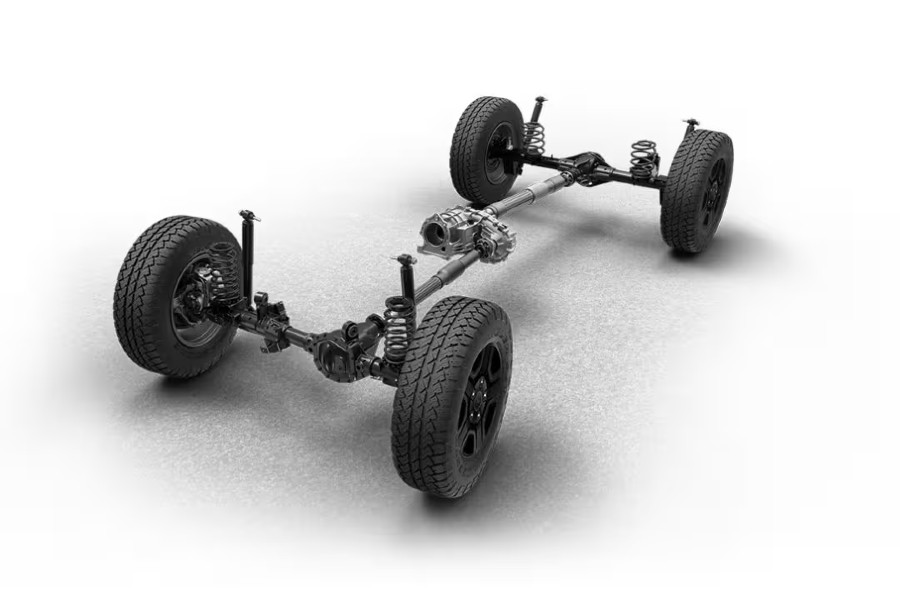
The Selec-Trac 4×4 system introduced a level of flexibility and convenience that made it stand out from the part-time Command-Trac system. Here are the key improvements and features it offered:
1. Full-Time 4WD Capability
- Always-On Option:
- Unlike Command-Trac, Selec-Trac provided a Full-Time 4WD mode, allowing drivers to leave the system engaged on any road surface, including dry pavement.
- This was made possible by the inclusion of a center differential, which allowed the front and rear driveshafts to rotate at different speeds, eliminating drivetrain binding on high-traction surfaces.
- Improved Safety:
- Full-Time 4WD improved traction and stability in mixed driving conditions, such as transitioning from dry roads to wet, icy, or snowy patches.
2. Transfer Case
- NP242 Transfer Case:
- Selec-Trac used the New Process 242 (NP242) transfer case, which added versatility through multiple driving modes:
- 2H (Two-Wheel Drive, High Range): For normal driving on dry pavement to save fuel.
- 4H Part-Time (Four-Wheel Drive, High Range): For slippery or off-road conditions, similar to Command-Trac.
- 4H Full-Time (Four-Wheel Drive, High Range): Allowed use on any road surface, providing continuous power to all four wheels without binding.
- Neutral: For towing.
- 4L (Four-Wheel Drive, Low Range): For maximum torque and control in extreme off-road situations.
- Selec-Trac used the New Process 242 (NP242) transfer case, which added versatility through multiple driving modes:
- Improved Drivability:
- This range of modes offered flexibility to switch between off-road and on-road driving seamlessly.
3. Enhanced Driving Dynamics
- Center Differential:
- The inclusion of a center differential enabled torque to be distributed between the front and rear axles dynamically, reducing wear and improving stability on high-traction surfaces.
- Off-Road Capability:
- Despite its advanced on-road features, Selec-Trac retained excellent off-road capability. In Part-Time 4WD or Low-Range modes, it behaved like Command-Trac, locking the front and rear driveshafts together for maximum traction.
4. Convenience and Usability
- User-Friendly Operation:
- Selec-Trac allowed drivers to “set it and forget it” in Full-Time 4WD, making it a great option for varying road conditions without requiring manual adjustments.
- Daily Driving:
- Full-Time 4WD was particularly beneficial for drivers in regions with unpredictable weather, ensuring safety and traction on both clear and hazardous roads.
5. Fuel Efficiency Considerations
- While the Full-Time 4WD mode provided enhanced safety and convenience, it could marginally reduce fuel efficiency compared to driving in 2H mode.
- Drivers could switch back to 2H for optimal fuel savings during extended highway or city driving.
6. Applications in the XJ
- Selec-Trac was available as an option on higher trims of the Jeep Cherokee XJ, such as the Limited, Country, and Wagoneer Limited models.
- Its inclusion made these trims more appealing to buyers seeking a premium SUV experience with added safety and versatility.
Key Advantages Over Command-Trac
- Full-Time 4WD: Allowed use on any surface, making it ideal for daily drivers who frequently encountered mixed road conditions.
- Dynamic Torque Distribution: Enhanced stability and reduced mechanical stress.
- Ease of Use: Fewer manual adjustments required, catering to drivers who preferred convenience.
Selec-Trac offered significant improvements over Command-Trac by introducing a Full-Time 4WD mode and a center differential, making it more versatile for on-road and off-road use. Its ability to adapt to a variety of road conditions without manual intervention made it a favorite among drivers seeking both capability and convenience.
What Is the Difference Between Command-Trac and Selec-Trac 4WD Systems?
The Command-Trac and Selec-Trac 4WD systems were both used in the Jeep Cherokee XJ, but they served different purposes and had distinct operational features:
Command-Trac (Part-Time 4WD):
- System Type: Part-time 4WD.
- Key Features:
- Designed for use in low-traction environments like mud, snow, or off-road terrain.
- Locks the front and rear driveshafts together when engaged, providing equal power distribution.
- Includes the following modes:
- 2H (Two-Wheel Drive, High Range): Normal driving on dry pavement.
- 4H (Four-Wheel Drive, High Range): For moderate off-road or slippery conditions.
- 4L (Four-Wheel Drive, Low Range): Maximum torque for extreme off-road use.
- Neutral: For towing.
- Does not have a center differential, so driving in 4WD on dry pavement can cause drivetrain binding and damage.
- Best Use: Off-road enthusiasts or drivers frequently encountering challenging terrains.
Selec-Trac (Full-Time 4WD):
- System Type: Full-time 4WD.
- Key Features:
- Features a center differential that allows the front and rear driveshafts to rotate at different speeds, enabling safe use on dry pavement.
- Includes additional modes for flexibility:
- 4H Full-Time: Ideal for on-road use in varying conditions, such as transitioning between dry and wet roads.
- 4H Part-Time: Locks the driveshafts together for off-road use (like Command-Trac).
- 2H, 4L, and Neutral modes are also available.
- Offers smoother driving dynamics and better safety in mixed driving conditions.
- Best Use: Daily drivers in areas with unpredictable weather or a mix of road conditions.
Key Differences:
| Feature | Command-Trac | Selec-Trac |
|---|---|---|
| Type | Part-time 4WD | Full-time 4WD |
| Center Differential | No | Yes |
| Use on Dry Pavement | Not suitable | Suitable |
| Traction Control | Equal power front and rear | Dynamic power distribution |
| Best For | Rugged off-road conditions | Mixed on-road and off-road |
Both systems were critical to the XJ’s off-road reputation, but Selec-Trac offered greater versatility for everyday driving, while Command-Trac excelled in pure off-road performance.
Jeep Cherokee XJ Brakes: Detailed Overview
The braking system of the Jeep Cherokee XJ evolved over its production years (1984–2001) to meet changing performance, safety, and regulatory requirements. Here’s an in-depth look at the technical details, including information about rear disc brakes and anti-lock braking systems (ABS).
1. Braking System Overview
The Jeep XJ featured a combination of disc brakes at the front and either drum or disc brakes at the rear, depending on the model and trim.
Front Brakes
- Type: Ventilated disc brakes.
- Rotor Diameter: Approximately 10.9 inches (276 mm).
- Calipers: Single-piston floating calipers.
- Material: Cast iron rotors for durability.
- Function:
- Ventilated rotors enhanced heat dissipation, reducing the risk of brake fade during extended use.
- Single-piston calipers provided adequate stopping power for the vehicle’s size and weight.
Rear Brakes
- Type: Primarily drum brakes, with rear disc brakes introduced in select models.
- Drum Brake Specifications:
- Diameter: 9 inches (229 mm).
- Configuration: Leading/trailing shoe design.
- Function: Drum brakes were cost-effective, durable, and offered sufficient braking force for standard use.
- Disc Brake Availability:
- Rear disc brakes were not standard on most XJ models.
- Limited availability in some export models, special trims, or as part of aftermarket conversions.
- Disc brake conversions remain a popular upgrade for XJ owners, providing improved braking performance and reduced maintenance compared to drum brakes.
2. Anti-Lock Braking System (ABS)
ABS Availability
- Optional ABS:
- ABS was not standard across all Jeep Cherokee XJ models.
- It was offered as an optional feature starting in 1991 on select trims, particularly higher-end models like the Limited or vehicles equipped with the towing package.
- Some export models did not include ABS due to regional preferences or regulations.
- Rear-Wheel ABS (RWABS):
- Early ABS systems on the XJ featured rear-wheel-only ABS, providing enhanced control during braking in slippery conditions.
- Four-Wheel ABS:
- Later models introduced four-wheel ABS, improving braking stability and safety during emergency stops.
ABS Technology
- Hydraulic Control:
- The ABS system used a hydraulic control module to regulate brake fluid pressure to individual wheels, preventing lockup.
- Sensors:
- Wheel speed sensors monitored rotational speed to detect slippage.
- Control Unit:
- The ABS module processed sensor data to adjust braking pressure dynamically.
Limitations of ABS in Early XJs:
- The early ABS systems in the XJ were prone to issues such as:
- Premature activation on rough terrain.
- Hydraulic leaks in the ABS pump and control unit.
- These issues led many owners to bypass or remove ABS systems in off-road applications.
3. Key Changes Over Production Years
1984–1990: Early Years
- Standard configuration: Front disc and rear drum brakes.
- No ABS option available during these years.
- The braking system was simple but effective for the XJ’s weight and intended use.
1991–1995: Introduction of ABS
- Rear-wheel ABS became available as an optional feature.
- Improvements in brake components to enhance reliability and safety.
- No significant changes in drum brake design for rear axles.
1996–2001: Evolution and Compliance
- Four-wheel ABS became available as an optional feature on more trims.
- Improvements in brake rotor and pad materials to meet stricter safety and performance regulations.
- Rear disc brakes remained rare, with most models retaining drum brakes at the rear.
4. Aftermarket and Upgrades
Rear Disc Brake Conversions
- Popular Upgrade:
- Many XJ owners opt to replace rear drum brakes with disc brakes, especially for off-road or high-performance applications.
- Benefits:
- Improved braking power and consistency, especially under heavy loads or in wet conditions.
- Reduced maintenance compared to drum brakes.
- Common Conversion Kits:
- Use components from later Jeep models, such as the Jeep Grand Cherokee (ZJ), which featured rear disc brakes.
ABS Modifications
- ABS is often disabled or removed by off-road enthusiasts due to its sensitivity on rough terrain, which can cause premature activation.
- Non-ABS systems are simpler, more reliable, and easier to maintain in off-road conditions.
5. Notable Features and Performance
Brake Performance:
- The XJ’s braking system was adequate for its weight class but was sometimes criticized for longer stopping distances compared to modern vehicles.
- Upgrades in brake pads, rotors, and rear disc conversions significantly improve braking performance.
Off-Road Applications:
- Drum brakes on the rear were preferred in some cases for off-road use due to their sealed design, which offered protection from mud and debris.
- Ventilated front disc brakes provided reliable stopping power during steep descents and challenging terrain.
The Jeep Cherokee XJ’s braking system was well-suited for its time, offering a reliable combination of front disc and rear drum brakes with optional ABS. While rear disc brakes were not standard, their addition through aftermarket conversions has become a popular way to modernize the XJ’s braking performance. The system’s adaptability and straightforward design ensured that the XJ could meet the demands of both everyday driving and rugged off-road adventures.
Jeep XJ’s Clutch Technical Details
The Jeep Cherokee XJ equipped with manual transmissions relied on a hydraulic clutch system, designed to handle the demands of various engine configurations, including the robust 4.0L Inline-6. Here’s a breakdown of the technical specifications and features of the XJ’s clutch system:
1. Clutch System Overview
The Jeep XJ’s clutch system operated hydraulically, providing smoother engagement and reduced effort compared to mechanical linkages. This design was ideal for both daily driving and off-road use, ensuring reliability in a variety of conditions.
System Components:
- Clutch Disc: Transfers power from the engine flywheel to the transmission input shaft.
- Pressure Plate: Applies pressure to the clutch disc, engaging the transmission with the engine.
- Flywheel: Provides a friction surface for the clutch disc while storing rotational energy.
- Hydraulic Master Cylinder: Activated by the clutch pedal, sends hydraulic fluid to the slave cylinder.
- Slave Cylinder: Actuates the clutch fork to disengage the pressure plate, separating the engine from the transmission.
2. Specifications
Clutch Disc
- Material:
- High-friction organic compounds designed for durability and heat resistance.
- Reinforced with steel for structural integrity.
- Diameter:
- Typical size: 10 inches (254 mm) for most XJ configurations.
- Spline Count:
- The clutch disc hub connects to the transmission input shaft with a typical spline count of 10 or 14 splines, depending on the transmission model.
Pressure Plate
- Type: Diaphragm spring design for consistent clamping force.
- Clamping Force:
- Around 1,700 to 2,200 pounds of force, sufficient for the torque output of the 4.0L I6 engine.
- Material: High-strength steel for durability under repeated use.
Flywheel
- Material: Cast iron or steel for thermal stability and resistance to warping.
- Weight: Typically 20–25 pounds, contributing to smooth engine operation and improved torque delivery.
Hydraulic System
- Master Cylinder:
- Bore Diameter: 0.75 inches (19 mm).
- Construction: Aluminum body with a plastic fluid reservoir.
- Slave Cylinder:
- Bore Diameter: 0.75 inches (19 mm).
- Integrated with a release bearing in later models for simplified design.
- Hydraulic Fluid:
- DOT 3 or DOT 4 brake fluid is used for operation.
3. Transmission Compatibility
The clutch system was designed to pair with specific manual transmissions used in the Jeep Cherokee XJ:
- Aisin-Warner AX5 (paired with the 2.5L I4):
- Smaller clutch disc and pressure plate to match the engine’s lower torque output.
- Aisin-Warner AX15 (paired with the 4.0L I6):
- Larger and more robust components to handle the increased torque of the inline-six engine.
- Peugeot BA-10/5 (used briefly with the 4.0L I6 in early models):
- Similar clutch specifications to the AX15 but less reliable overall.
4. Hydraulic System Benefits
- Reduced Pedal Effort: The hydraulic assist system significantly reduced the force required to depress the clutch pedal, improving driver comfort.
- Self-Adjusting: Hydraulic clutches automatically compensate for wear in the clutch disc, ensuring consistent engagement over time.
- Durability: Designed to withstand the rigors of off-road driving, including exposure to water and debris.
5. Maintenance and Common Issues
- Fluid Leaks: Over time, seals in the master or slave cylinder can wear out, leading to leaks and reduced clutch performance.
- Clutch Disc Wear: Excessive wear can cause slipping or difficulty shifting gears, requiring replacement.
- Hydraulic Bleeding: Air in the hydraulic lines can lead to a spongy pedal feel and may require bleeding the system to restore performance.
6. Upgrades and Aftermarket Options
Many Jeep XJ owners upgrade their clutch systems for enhanced performance, particularly for off-road or towing applications:
- Heavy-Duty Clutches: Offer increased clamping force and durability for high-torque engines or modified vehicles.
- Performance Flywheels: Lightweight flywheels reduce rotational inertia for quicker throttle response.
- Braided Steel Hydraulic Lines: Improve durability and resist swelling under high pressures.
The Jeep XJ’s clutch system was engineered for reliability and smooth operation, making it well-suited for the vehicle’s versatile applications. Its hydraulic design provided comfort and consistency, while its durable materials ensured longevity under demanding conditions. For enthusiasts and off-roaders, the system’s robust design and upgrade potential contribute to the XJ’s enduring appeal.
Where was the Jeep JX produced?
The Jeep Cherokee XJ, produced from 1983 to 2001 in the United States and until 2014 internationally, was manufactured in several facilities worldwide. Here’s an overview of its production details:
1. Toledo Assembly Plant, Ohio, USA
- Location: Toledo, Ohio.
- Operational Period for XJ: 1983–2001.
- Production Volume: Over 2.8 million units during its 18-year U.S. production run. Quadratec
- Workforce: While specific numbers for the XJ era are limited, the Toledo plant has historically employed thousands of workers, contributing significantly to the local economy.
- Technical Details: The plant was equipped with advanced manufacturing technologies of the time, enabling efficient unibody construction and assembly processes.
2. Beijing Jeep Corporation, China
- Location: Beijing, China.
- Operational Period for XJ: 1984–2005.
- Production Volume: Exact figures are not readily available, but the XJ was a popular model in China, leading to extended production years.
- Workforce: The joint venture between American Motors Corporation (AMC) and Beijing Automotive Works employed a substantial number of local workers, fostering automotive industry growth in China.
- Technical Details: The facility adapted the XJ to meet local market needs, including right-hand drive configurations and diesel engine options.
3. Arab American Vehicles Company, Egypt
- Location: Cairo, Egypt.
- Operational Period for XJ: 1992–2001.
- Production Volume: Specific numbers are limited, but the XJ was assembled here to cater to Middle Eastern markets.
- Workforce: The plant provided employment opportunities in the region, contributing to the local automotive sector.
- Technical Details: The Cairo facility assembled XJs from knock-down kits, ensuring the vehicles met regional specifications and preferences.
4. IKA-Renault Plant, Argentina
- Location: Córdoba, Argentina.
- Operational Period for XJ: 1996–2000.
- Production Volume: Limited production run to serve the South American market.
- Workforce: The plant employed a skilled workforce, contributing to Argentina’s industrial capabilities.
- Technical Details: The facility produced XJs with adaptations suitable for the South American terrain and consumer preferences.
5. Valencia Assembly Plant, Venezuela
- Location: Valencia, Venezuela.
- Operational Period for XJ: 1987–2001.
- Production Volume: Served the local and regional markets with a steady supply of XJ models.
- Workforce: The plant was a significant employer in the region, supporting the local economy.
- Technical Details: Produced XJs with specifications tailored to the Venezuelan market, including considerations for fuel types and driving conditions.
6. Changsha GAC Fiat Chrysler Assembly Plant, China
- Location: Changsha, Hunan Province, China.
- Operational Period for XJ: 2015–2017.
- Production Volume: Focused on producing the Jeep Cherokee for the Chinese market.
- Workforce: The plant employed a modern workforce trained in advanced manufacturing techniques.
- Technical Details: Equipped with state-of-the-art technology to produce vehicles meeting contemporary standards and consumer expectations.
Jeep has been part of the Chrysler Corporation since 1987, when the Chrysler Corporation acquired the Jeep brand, along with other assets, from their previous owner, American Motors Corporation (AMC).
These production facilities played a crucial role in the global success of the Jeep Cherokee XJ, each contributing to its legacy through dedicated craftsmanship and adaptation to regional markets.
Why the Jeep Cherokee XJ Is a Legend?
1. Iconic Design
The XJ’s boxy yet aerodynamic design has become instantly recognizable, influencing SUVs for decades. Awarded as the best SUV multiple times.
2. Off-Road Dominance
Equipped with capable suspensions, solid axles, and high ground clearance, the XJ could tackle almost any terrain.
3. Cultural Impact
Loved by off-roaders, families, and even militaries, the XJ was a universal vehicle.
4. Affordable and Modifiable
The XJ’s robust engineering and availability of aftermarket parts have made it a favorite among DIY enthusiasts.
What makes the Jeep Cherokee XJ design so unique?
The Jeep Cherokee XJ’s design stands out as one of the most influential and unique SUV designs in automotive history. Here’s what makes it special:
1. Unibody Construction
- Industry First: The XJ was one of the first SUVs to adopt a unibody construction, combining the body and frame into a single structure.
- Advantages:
- Lighter than traditional body-on-frame designs, improving fuel efficiency and handling.
- Provided better torsional rigidity for enhanced durability and off-road capability.
2. Iconic Boxy Aesthetic
- The XJ’s bold, boxy design became a hallmark of Jeep’s rugged yet functional aesthetic.
- Timeless Appeal: Its clean lines and utilitarian styling remain popular and practical for off-road and urban environments alike.
3. Aerodynamic Efficiency
- Despite its boxy shape, the XJ was designed with aerodynamic considerations, featuring:
- Sloping hood.
- Flush-mounted glass for reduced drag.
- Subtle curves along the body to balance ruggedness with modernity.
4. Compact Yet Spacious
- Dimensions: The XJ managed to pack a roomy interior into a compact exterior.
- Designed with a shorter wheelbase and overhangs, it offered excellent maneuverability for tight trails and urban streets while maintaining ample cargo and passenger space.
5. Versatility
- The XJ’s platform was adaptable, serving as the foundation for numerous models, including military and police versions.
- Offered in 2-door and 4-door variants, catering to diverse consumer needs.
6. Advanced Suspension
- Jeep engineered the XJ with a combination of coil springs in the front and leaf springs in the rear.
- This setup provided:
- Robust off-road performance.
- Comfortable on-road ride quality.
7. Signature Jeep DNA
- The XJ retained Jeep’s iconic 7-slot grille and trapezoidal wheel arches, linking it to the brand’s heritage while signaling its forward-thinking approach to SUV design.
8. Built for Modifications
- The XJ’s straightforward design and sturdy platform made it a favorite for customization.
- It could easily accommodate larger tires, lift kits, and other off-road enhancements, contributing to its cult following among enthusiasts.
9. Collaborative Engineering
- Global Influence: The design was a collaboration between AMC and Renault, integrating European engineering insights with American ruggedness.
- This partnership resulted in a unique blend of practicality, durability, and style.
10. Ahead of Its Time
- Introduced in 1984, the XJ set the standard for modern SUVs.
- Many elements of its design—like unibody construction and compact versatility—are now common in the SUV segment.
The Jeep Cherokee XJ’s design wasn’t just unique for its era; it was visionary, influencing SUVs for decades to come and securing its status as an automotive legend.
Why was the Jeep Cherokee XJ so influential?
The Jeep Cherokee XJ was a groundbreaking vehicle that set the standard for modern SUVs, making it one of the most influential automotive designs in history. Here’s why:
1. First SUV with Unibody Construction
- Game-Changer: The XJ Jeep was one of the first SUVs to adopt a unibody structure, which combined the body and frame into a single unit.
- Advantages:
- Reduced weight, improving fuel efficiency and handling.
- Enhanced structural rigidity, providing durability for off-road use and comfort for urban driving.
- Influence: This innovation became the template for nearly all SUVs that followed. Many consider the XJ as the best SUV ever created by Jeep.
2. Perfect Blend of Off-Road Capability and Urban Practicality
- Prior to the XJ, SUVs were primarily large, truck-based vehicles.
- The XJ’s compact size, ease of maneuverability, and comfortable ride brought SUVs into city streets while retaining the off-road prowess Jeep was known for.
- Result: It created a new category—the compact SUV—that remains dominant today.
3. Enduring Design Aesthetic
- The XJ’s clean, boxy design was both functional and timeless, influencing SUV styling for decades.
- Legacy: Its distinctive look—defined by the 7-slot grille, trapezoidal wheel arches, and utilitarian shape—continues to inspire modern SUV designs.
4. Broad Appeal Across Markets
- The XJ’s versatility made it a global success:
- Adventure Enthusiasts: Rugged off-road capabilities with solid axles and advanced 4×4 systems like Command-Trac and Selec-Trac. The XJ was of the best sport utility vehicles.
- Urban Drivers: Compact footprint and smooth ride made it ideal for everyday use.
- Military & Government Use: Durable and reliable design appealed to institutions needing robust utility vehicles.
5. Wide Range of Models and Customizations
- Jeep offered the XJ in numerous trims and editions (Base, Sport, Pioneer, Limited, etc.), catering to a variety of needs and price points.
- Its straightforward design made it a favorite for aftermarket modifications, from off-road enhancements to overlanding setups.
6. Innovative Engineering
- Engines: The legendary 4.0L Inline-6 engine was renowned for its durability, power, and simplicity.
- Suspension: A hybrid system using coil springs in the front and leaf springs in the rear provided excellent off-road articulation and on-road comfort.
- 4×4 Systems: Jeep’s advanced four-wheel-drive systems allowed it to excel in diverse terrains, from rugged trails to snowy roads.
7. Cultural Significance
- The XJ became a symbol of freedom, adventure, and practicality, representing the ideal vehicle for both weekend warriors and daily commuters.
- It became the go-to vehicle for overlanders, off-roaders, and even families, showing its universal appeal.
8. Affordable Yet Premium
- The XJ Jeep was competitively priced, offering excellent value for its capability and durability.
- Higher-end trims like the Limited and Wagoneer brought premium features to the SUV segment, proving that utility and luxury could coexist.
9. Longevity and Legacy
- Produced from 1984 to 2001, its long production run is a testament to its popularity and success.
- Many XJs are still on the road today, reflecting their unmatched durability and timeless appeal.
10. Influence on the Modern SUV
- The XJ’s compact size, unibody construction, and blend of on-road and off-road capabilities inspired countless SUVs that followed.
- Today’s crossover SUVs, which dominate the market, owe much of their DNA to the XJ’s pioneering design and engineering.
The Jeep Cherokee XJ wasn’t just a vehicle—it was a revolution in automotive design. By combining the ruggedness of traditional Jeeps with the practicality of a family vehicle, the XJ redefined what an SUV could be and laid the foundation for the SUV-dominated automotive landscape we see today. Its legacy continues as a classic icon beloved by enthusiasts and a benchmark for compact SUV innovation.
How did the Jeep XJ influence modern SUVs?
The Jeep Cherokee XJ’s impact on the SUV industry was profound and long-lasting, shaping the modern SUV market in numerous ways. Here’s how the XJ influenced today’s SUVs:
1. Introduction of Unibody Construction
- Revolutionary for SUVs: The XJ was one of the first SUVs to adopt a unibody design instead of the traditional body-on-frame construction.
- Benefits:
- Lighter weight, improving fuel efficiency and handling.
- Enhanced rigidity, providing better on-road performance without sacrificing off-road capability.
- Legacy: Nearly all modern crossover SUVs now use unibody construction, striking a balance between comfort and capability.
2. Creation of the Compact SUV Segment
- Before the XJ, SUVs were typically large and cumbersome, designed primarily for off-road use.
- The XJ’s smaller size and urban-friendly design proved that SUVs could thrive as everyday vehicles.
- Impact: It paved the way for the compact SUV market, now one of the most competitive and popular automotive segments worldwide.
3. Blending Utility with Comfort
- The XJ Jeep offered a rugged off-road experience while delivering car-like comfort and driving dynamics.
- Features like air conditioning, power accessories, and refined interiors became standard expectations in SUVs.
- Modern Influence: Today’s SUVs strive to combine off-road capabilities with luxury and convenience, a balance pioneered by the XJ.
4. Iconic Design Language
- The XJ’s boxy, utilitarian design set the tone for SUVs, blending ruggedness with aerodynamic efficiency.
- Elements That Endure:
- The 7-slot grille remains a signature design feature in Jeep vehicles.
- Compact yet spacious proportions inspired future SUVs, prioritizing practicality without excessive bulk.
- Trendsetter: The XJ’s clean lines and functional aesthetics influenced the design language of many SUVs that followed.
5. 4×4 and Drivetrain Innovation
- The XJ introduced advanced 4×4 systems like Command-Trac (part-time 4WD) and Selec-Trac (full-time 4WD), making off-road capabilities more accessible.
- Dual Purpose: These systems allowed drivers to seamlessly transition between urban commutes and rugged trails.
- Modern Relevance: Many modern SUVs incorporate advanced all-wheel-drive systems inspired by the XJ’s versatility.
6. Durable Powertrains
- The XJ’s legendary 4.0L Inline-6 engine became synonymous with reliability and power.
- Set a Benchmark: Modern SUVs aim for similar durability and efficiency, with turbocharged engines and hybrid systems echoing the XJ’s balance of performance and longevity.
7. Customization and Aftermarket Popularity
- The XJ’s straightforward design made it a favorite for modifications, from off-road enhancements to overlanding setups.
- Cultural Impact: Modern SUVs like the Jeep Wrangler and Ford Bronco continue to cater to customization enthusiasts, an ethos popularized by the XJ.
8. Versatility Across Demographics
- The XJ appealed to a wide audience:
- Families: Spacious interior and daily usability.
- Adventurers: Rugged off-road capabilities.
- Professionals: Reliability and simplicity.
- Modern SUVs: Brands strive to replicate this universal appeal, offering features that cater to diverse lifestyles.
9. Urban-Friendly SUVs
- The XJ Jeep demonstrated that SUVs didn’t have to be massive trucks; they could fit comfortably into urban life.
- Compact Size, Big Capability: Modern crossovers draw heavily from this concept, offering smaller footprints while maintaining utility and comfort.
10. Setting an Industry Standard
- The XJ’s success inspired automakers worldwide to reimagine their SUV lineups.
- Direct Influence:
- Competitors like the Toyota 4Runner and Ford Explorer emerged to compete with the XJ.
- Modern SUVs and crossovers from Honda, Subaru, and Hyundai owe their lineage to the XJ’s innovation.
The Jeep Cherokee XJ redefined what an SUV could be, moving the market away from oversized, truck-based vehicles to versatile, compact, and comfortable models. Its innovations in design, construction, and functionality set a benchmark that modern SUVs continue to emulate, making it one of the most influential vehicles in automotive history.
Frequently Asked Questions (FAQs) About the Jeep Cherokee XJ
1. What is the Jeep Cherokee XJ, and why is it significant?
- The Jeep Cherokee XJ is a compact SUV produced from 1984 to 2001. It was revolutionary due to its unibody construction, which combined the body and frame into a single unit. This design improved fuel efficiency, reduced weight, and enhanced handling while maintaining off-road capability. The XJ Jeep also set the benchmark for the compact SUV segment, influencing the design of modern crossovers and SUVs.
2. What engines were available in the Cherokee XJ?
- The XJ offered a variety of engines:
- Gasoline:
- 2.5L Inline-4: 118–123 HP.
- 4.0L Inline-6: 177–190 HP (renowned for its durability and torque).
- 2.8L GM V6: 110–115 HP (available in early models).
- Diesel:
- 2.1L Renault Turbo Diesel: ~87 HP, designed for efficiency.
- 2.5L VM Motori Turbo Diesel: ~116 HP, providing excellent torque.
- Gasoline:
- International markets, particularly China, introduced additional engines like the 2.4L Mitsubishi 4G64 and 2.7L Beijing I4 engines in post-2001 models.
3. What 4×4 systems did the XJ use, and how do they differ?
- The Cherokee XJ featured two primary 4×4 systems:
- Command-Trac (Part-Time 4WD): Designed for off-road use, this system locked the front and rear driveshafts for equal power distribution. It excelled in low-traction conditions but wasn’t suitable for dry pavement due to drivetrain binding.
- Selec-Trac (Full-Time 4WD): Featured a center differential that allowed it to operate safely on any surface, including dry roads. It provided flexibility for on-road comfort and off-road capability.
- Both systems included a 4L (Low Range) mode for extreme off-road conditions.
4. Why was the XJ discontinued in the U.S.?
- Production of the Cherokee XJ ended in 2001 to make way for the Jeep Liberty (KJ). The change reflected evolving consumer preferences for more modern designs and additional safety features. Despite its discontinuation, the XJ’s influence persists in Jeep’s current lineup.
5. Were XJs manufactured outside the U.S.?
- Yes, the XJ was produced in multiple countries, including:
- China: Manufactured by Beijing Jeep and later BAW until 2014. Variants like the Jeep 2500/2700 and BAW Qishi featured modified designs.
- Venezuela: Produced from 1987–2001 for the South American market.
- Argentina: Assembled from 1996–2000.
- Egypt: Built by Arab American Vehicles from 1992–2001.
- Indonesia: Produced for Southeast Asian markets from 1992–2000.
- These models were tailored to local preferences and often included diesel engines and simplified configurations.
In total, it is estimated that over 2.8 million units of the Jeep Cherokee XJ were produced globally. The vehicle’s long production run and continued popularity make it one of Jeep’s most successful models.
6. What makes the 4.0L Inline-6 engine so legendary?
- The 4.0L I6 engine, introduced in 1987, became iconic due to its:
- High torque output (224–225 lb-ft), ideal for off-road driving and towing.
- Durability and reliability, often exceeding 300,000 miles with proper maintenance.
- Simple design, making repairs and maintenance straightforward.
- It remains a favorite among Jeep enthusiasts and is considered one of the best engines in Jeep’s history.
7. What is the fuel efficiency of the Cherokee XJ?
- Fuel economy varied depending on the engine and configuration:
- Gasoline engines achieved 17–20 MPG city and 20–26 MPG highway.
- Diesel engines, especially the 2.1L Renault Turbo Diesel, offered slightly better efficiency, particularly in international markets.
- While not as efficient as modern SUVs, these figures were competitive for its time.
8. What were the most popular XJ trims?
- The most popular trims included:
- Jeep Cherokee Sport: A versatile and affordable model that appealed to a wide audience.
- Jeep Cherokee Limited: The luxury-focused trim with leather interiors and premium features.
- Jeep Cherokee Classic: A timeless design that resonated with Jeep purists.
- Jeep Cherokee Country: Combined off-road capability with upscale styling.
- Base Model: Known for its affordability and reliability, often used as a platform for modifications.
9. Why is the Jeep Cherokee XJ still popular today?
Iconic Design: The timeless boxy shape and 7-slot grille continue to appeal to SUV enthusiasts.
The XJ Jeep remains a favorite among enthusiasts due to:
Durability: Its rugged construction allows many XJs to remain operational decades after production ended.
Off-Road Capability: The solid axles, high ground clearance, and reliable 4×4 systems make it a standout performer in off-road conditions.
Modifiability: Its simple design makes it easy to customize for off-roading, overlanding, or restoration projects.
Conclusion
The Jeep Cherokee XJ stands as a defining icon in the world of SUVs, revolutionizing the automotive landscape with its innovative design, exceptional versatility, and enduring appeal. From its introduction in 1984 to its final production in 2001, the XJ redefined what an SUV could be—combining rugged off-road capability with the practicality and comfort of a family vehicle. It upheld the Jeep tradition of creating vehicles that excel both on and off the road, seamlessly blending adventure-ready performance with everyday usability.
The XJ’s unibody construction, groundbreaking at the time, paved the way for modern crossover SUVs, offering a lighter, more efficient alternative to traditional body-on-frame designs used in regular cars and full-size SUVs. This innovation set the XJ apart as a pioneer, not just in North America but across global markets, where it quickly became a favorite among a diverse audience.
Beyond its technical achievements, the XJ offered a range of trim levels that allowed buyers to customize their vehicle to suit their lifestyle. Its legendary 4.0L Inline-6 engine remains a symbol of durability and power, while its two advanced 4×4 systems, Command-Trac and Selec-Trac, set benchmarks for off-road performance and on-road adaptability. Its ability to cater to urban streets, rugged trails, and international roads further solidified its place in the hearts of Jeep enthusiasts.
Today, the Cherokee XJ is celebrated not only for its contributions to automotive innovation but also for its timeless design and modifiability. It remains a favorite among collectors, off-roaders, and DIY enthusiasts who value its unique combination of simplicity and capability.
As we reflect on the XJ’s lasting impact, it is clear that this compact SUV wasn’t just a vehicle—it was a revolution. Upholding the Jeep tradition of rugged versatility, the XJ’s influence can still be seen in modern SUVs and crossovers. Its reputation as a reliable, adaptable, and legendary vehicle ensures its place in automotive history for generations to come.
